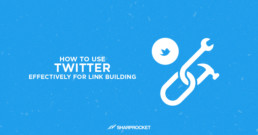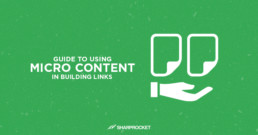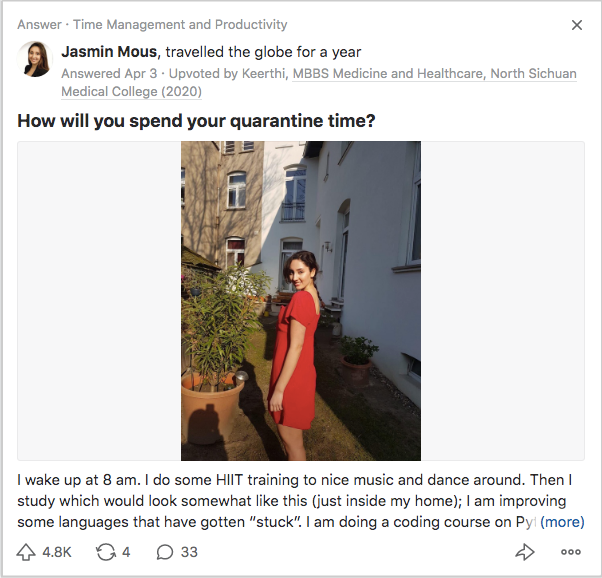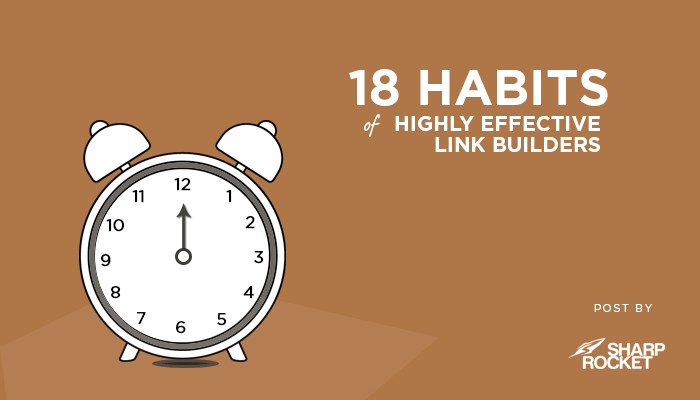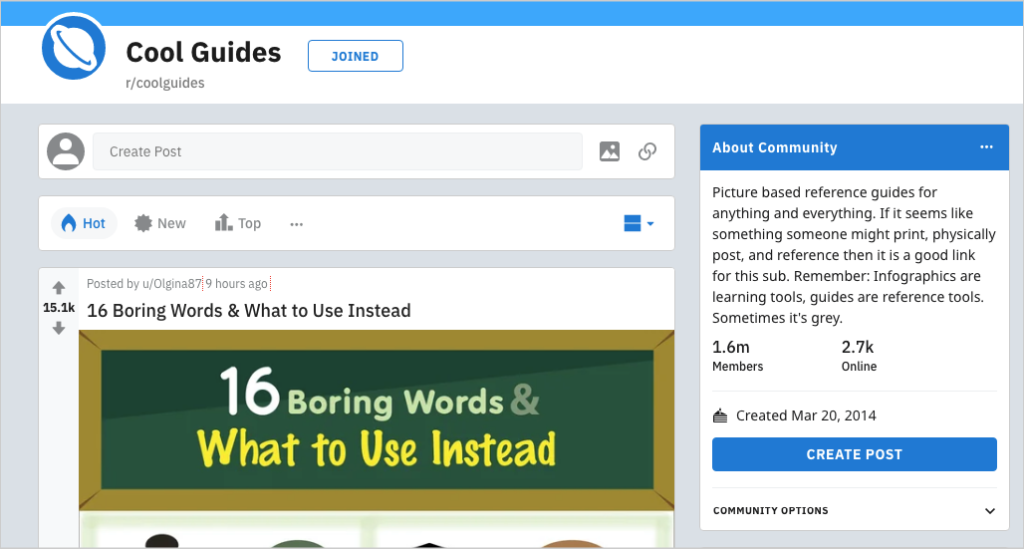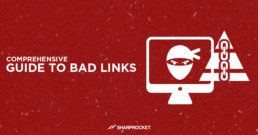How to Use Twitter Effectively For Link Building
Social media platforms have been useful places to promote the brand's content.
Certainly, this includes the idea of using Twitter effectively to build connections with like-minded people, to get more eyeballs to content, and to acquire natural links in the process.
You don't use Twitter to spam people with links to your content, all the time. There is a proper way of sharing your content on the platform, and be mindful of being too aggressive just for the sake of links. That 2009 strategy doesn't work anymore.
How to Use Twitter Effectively For Link Building
Here are four useful tips on how to use Twitter for link building and content marketing campaigns:
- Experiment with Tweetstorms
- Look for Interview Requests
- Take advantage of Twitter chats
- Build Stronger Networks
1. Experiment with Tweetstorms
If you're a marketer or business person, you may have seen threads of tweets of famous founders — these are tweetstorms.
Tweetstorm is a thread of tweets conveying messages, principles, ideas, stories, or trends. In any topic area, a tweetstorm can be a powerful way to drive more followers to your brand.
Specific to link building, you can gain new connections you can eventually reach out to for potential content contributions or content collaborations.
It's a subtle approach of building your influence around a platform that sticks.
Here are some examples of the best tweetstorms.
Ben Collins on Google Sheets Productivity
Mega thread of #GoogleSheets #productivity tips & tricks coming up...
Starting with this humdinger
Type “https://t.co/AowcjCD40h” or "https://t.co/kOOFaQOOov" into your browser to instantly create a new Google Sheet
(1/n) pic.twitter.com/TvB5cUk15D
— Ben Collins (@benlcollins) January 14, 2020
Why it worked:
- It starts with a topic idea "mega-thread of Google sheets productivity". This sets the foundation and know-how to people who'd likely follow all tweets in that thread. This gives people the general context of the tweetstorm.
- It includes hashtags to gain more visibility searching for it (#GoogleSheets and #Productivity).
- It contains visual formats (e.g. gifs).
- It provides actionable takeaways for each tweet in the tweetstorm.
Jensen Harris on Loving Startup
Leaving a big company job for a startup can rejuvenate your career and make you love work again.?
But landing a startup job requires relearning some things, especially if (like me) you logged years and years at Microgoogfaceforceazon.
Here are six things I wish I'd known:
— Jensen Harris (@jensenharris) April 12, 2018
Why it worked:
- His career tips are based on his experiences (things I wish I'd known).
- It gives straight a context to which audience the tweetstorm is for.
- He answers to every reply to tweets in the tweetstorm — giving more visibility to the entire tweetstorm; attracting more replies and retweets.
How to use tweetstorms in gaining traction for links:
- Brainstorm on what topic idea works best in a tweetstorm — it should be something interesting, either it is a story, concept, or how-to steps (quickly be narrated in a tweetstorm).
- Be subtle in adding links to your content. Link to your page as long as the tweet or a reply to tweet replies make sense in the context.
- Hooks the people to see your other tweets by making your first tweet cuts the deepest. Your first tweet should also work as a singular message.
- Share relevant links to your content as separate tweets after a tweetstorm. New followers from tweetstorms would likely see and consume your content — which results in more social shares and links to your page.
2. Look for Interview Requests
There are many methodologies for getting more exposure to high-end industry publications.
You can get your articles published in major niche websites, use HARO effectively for interview or story requests, or approach journalists using Twitter.
For months, I've been tracking requests from bloggers, content creators, journalists, and other publishers who are looking for stories and guests for their show (e.g. podcasts).
Here's what it looks like in my inbox:
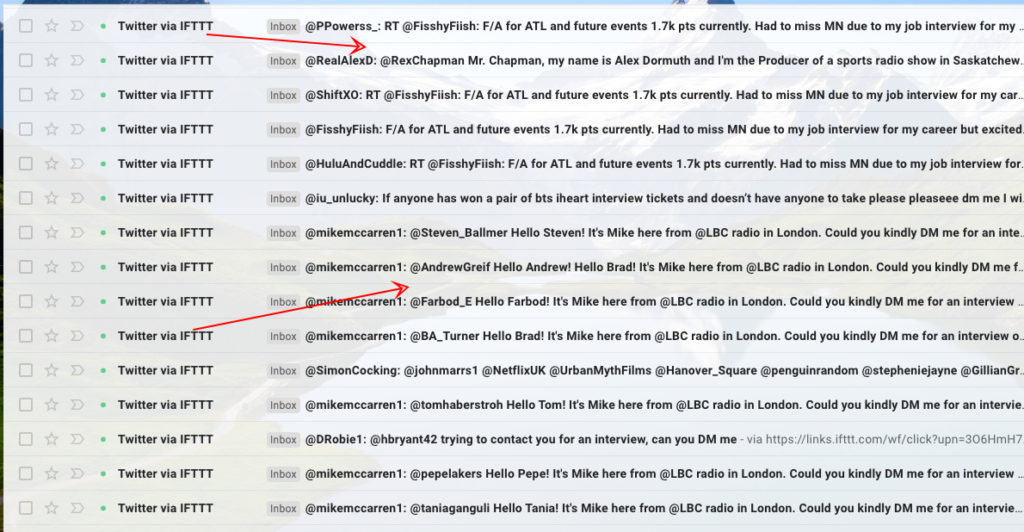
I keep track of all these emails from IFTTT, which is a setup that I've created to easily automate looking to interview tweets from publishers.
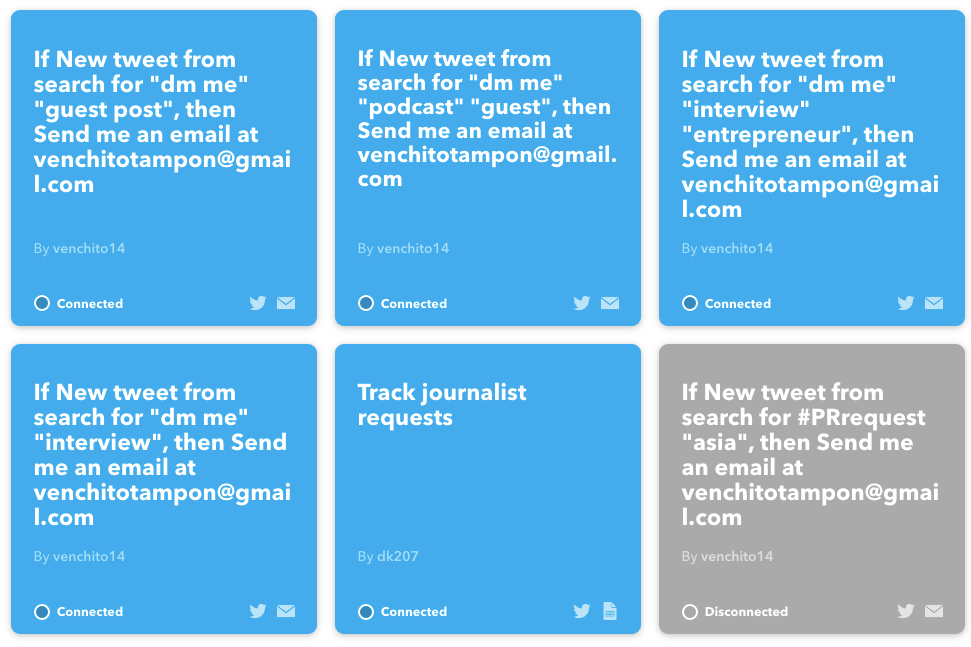
IFTTT allows you to create applets or recipes that trigger whenever there are tweets with (#prrequest OR #journorequest OR #haro). These tweets are sent to your inbox, which is often frequent so you need to have a filtering process to remove irrelevant tweets (looking to interview tweets not relevant to your niche).
Additional tips to use Twitter effectively in gaining new interview invitations (for links):
- Share your content pieces regularly on Twitter. It helps in gaining visibility for your brand to attract publishers and other media creators, such as podcasters, to invite you to their shows.
- Promote your latest interviews (media interviews, podcast guestings, round-up articles where you share your best inputs).
- Create private Twitter lists of major and minor publishers in your industry. Keep track of what they do by monitoring their tweets — you may never know moments they'd post tweets looking for interviewees.
3. Take advantage of Twitter chats
Twitter chats are scheduled group discussions on a particular topic, normally with guest experts to answer a series of questions.
In the digital marketing field, you'll see a good share of these Twitter chats every week.
SEMRush does this well.
Q1. You created content that didn’t meet goals. How do you explain this to clients or the c-suite? Next steps? @CTrappe #SEMrushChat pic.twitter.com/Pql6Ipz2CM
— SEMrush (@semrush) January 22, 2020
Why it worked:
- Scheduled activities are likely to be included in someone's calendar. This allows people to regularly attend to your Twitter chats — and even share it with their own networks if they find it worthy of their time.
- Invite guests to your Twitter chats to get a ripple effect in social sharing. Interviewees will normally promote their scheduled Twitter chat to their followers — this gives chances of gaining new traction to your show.
- Have a list of questions ready to answer. Invited guests will then know what to do during Twitter shows, as opposed to randomly asking them with anything.
4. Build Stronger Networks
Be very subtle in your approach to Twitter marketing.
Use Twitter to expand your networks.
One recommended approach is to customize your tweets when sharing useful content in your niche.
Analysis of 700,000 articles:
While long-form content may not be a ranking factor, it sure gets shared/linked-to at a higher rate (& anecdotally, tends to rank for more terms)
Anatomy of Top Performing Articles https://t.co/unfsnpzwyO
thx @Kevin_Indig for the tip. via @semrush pic.twitter.com/gwZAG8NOzX
— Cyrus (@CyrusShepard) January 15, 2020
Instead of following paths of basic tweet lines to content.
When you've actually read the content piece, you know its best points. So start sharing what you learned from the content and highlight them in your tweets.
This initiative helps you to stand out among people who shared tweets, which increases your chances to be on the radar for your brand to be noticed by the original content creator.
How to build stronger networks using Twitter:
- Regularly share the best content pieces in your industry. It only takes 3 to 5 minutes to do this when scheduling posts — you can use Buffer for Twitter scheduling.
- Start participating in threads where you think you can add value with your inputs. Engage people with your expertise.
- Create your own Twitter list to follow influencers in your industry. This method also allows you to generate ideas for your content, as you're able to see what types and topics of content your influencers (who are likely to link to your site) are actively sharing on Twitter.
Learning How to Use Twitter Effectively
Follow the basic principles and tips I've shared above then experiment on new ways on how you can maximize Twitter in marketing your business. Let me know in the comment section below if you have any questions.
How to Build Relevant and Authority Blog Links
A blog is a place of content.
Creating a blog with brand design, proper architecture, preferred taxonomy, and unique style that differentiates it from its contemporaries — is all there is for setup.
The container needs things in it and this is where your content assets play at most.
Produce your content pieces, and promote them to proper places.
How to Build Blog Links
Here are five ways to build blog links to your website:
- Rank content for “quotes” keywords
- Ego-bait list of top niche websites
- Targeted outreach for tool reviews
- Resource assets for linkable markets
- Create local guide resource links
1. Rank content for "quotes" keywords
Quotes are shareable in nature. It is shared on social networks and can be included in blog posts — which opens opportunities for blog links.
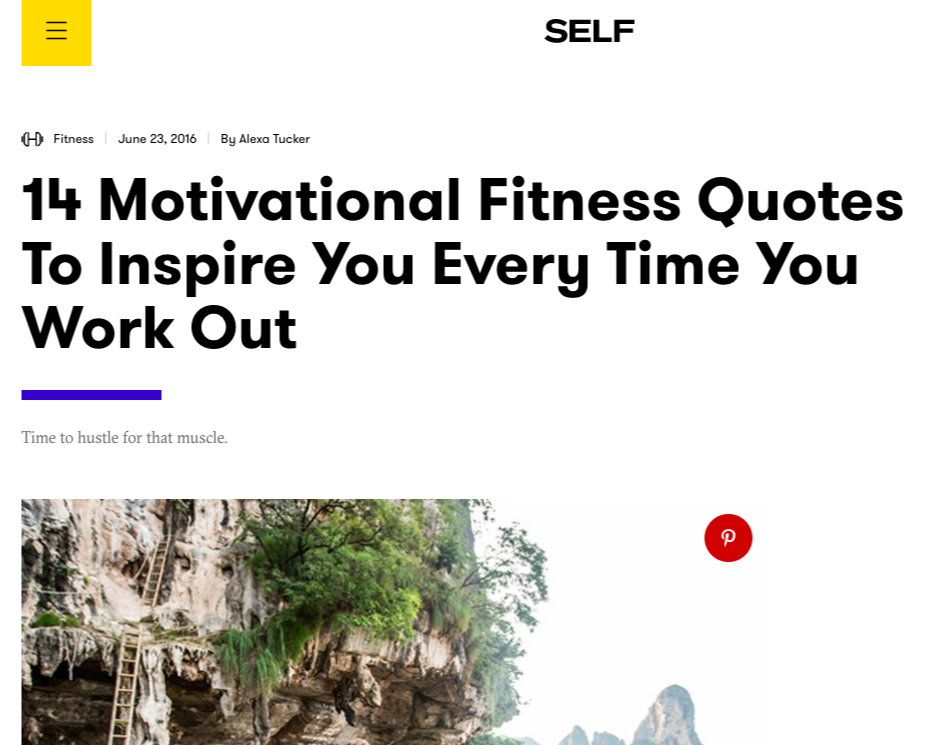
While the opportunities for blog links is higher when the content itself (that lists all quotes) starts to rank for "quote" keywords as it can organically acquire links from content creators as they research for new ideas, the initial sharing on social platforms already has a gross effect on new links.
How to build content and rank for "quotes" keywords
Identify any quotes keyword opportunities in your industry. You can look for Ahrefs with this.
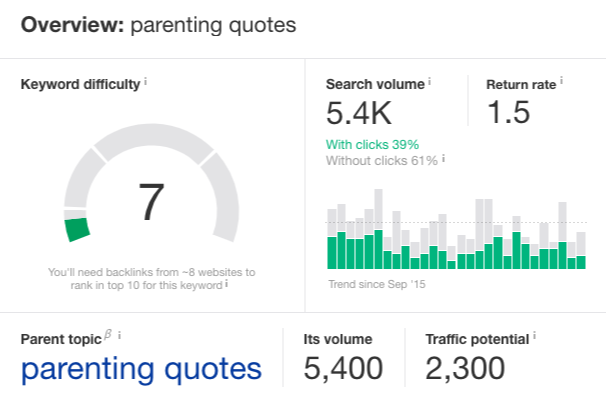
Search specifically about topics close to your brand. List them down in a spreadsheet.
Then, start checking the top pages ranking for your target quotes keyword. Assess any gaps you can fill in — can you make more appealing visuals for quotes?
The shareability of "quotes" content depends on visual design, quality of quotes, and its sources.
Start scheduling posts that include your quotes and/or link to your entire quote content on your own social profiles.
You can increase its visibility by reaching out to bloggers and publishers that have linked to you in the past — they're likely to be receptive to any new content that's worth linking to.
In addition, you can discover any existing posts that need visual content and offer your quotes content as an additional content format to their posts — that would be its value proposition.
2. Ego-bait list of top niche websites
Every publisher wants to get featured on a list worthy of following (e.g. top [niche] websites for 2020).
It's a privilege yet a good opportunity for brands like you to start creating ego bait content that features those niche publishers and practitioners who have their own blogs.
To increase the chances of acquiring blog links, start prospecting, and outreach initiatives before content creation.
How to create ego-bait content and build blog links to it
Discover bloggers you want to feature in your ego bait content.
Collect their contact information and reach out to them with personalized emails. Reach out with the intent of knowing if they want to get featured in your top list content, and subtly ask for a blog link to the list you've created.
Chances are you get yeses from this approach. Who wants not to get featured in a top list of X websites? This link building method has high chances to very specific verticals that only have a handful of bloggers interacting with each other.
Then publish your ego-bait content.
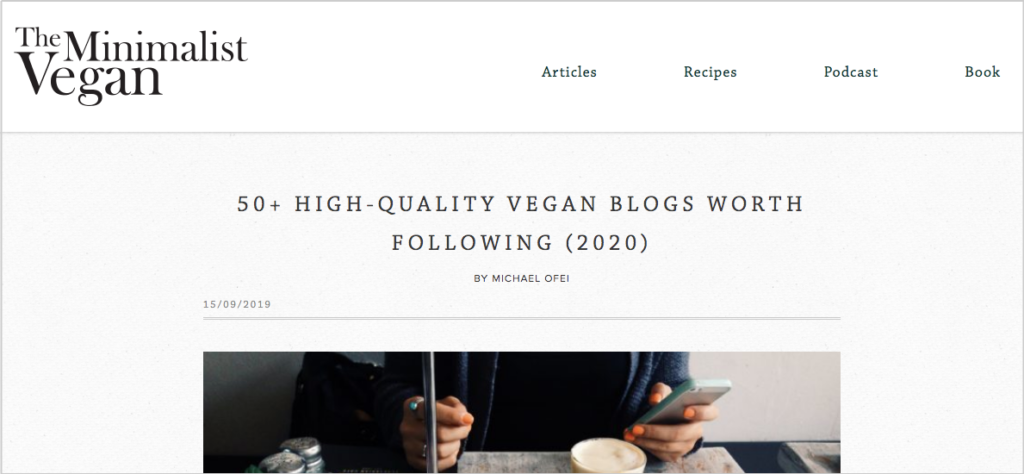
Reach out to people (publishers, bloggers, or any content creators) you've listed in your roundup content.
Let them know about your latest content. You'll primarily get blog links from people you've mentioned and asked for feedback from.
3. Targeted outreach for tool reviews
This next link building technique is applicable to the following people:
- independent bloggers who are not associated with any product and service brands
- brands who can write reviews for their non-competitor brands
- news sites or publishers with blogs fitted for product reviews or a content piece that includes a short or long walkthrough process of using a tool
- non-profit organizations with the freedom to publish tool reviews
I've recently created a quick guide on how to use HARO (Help a Reporter Out). It's simple content that walks you through the benefits of using HARO, how it works, how to use it in simple steps, how to write a HARO pitch, and how to monitor links from HARO pitches.
Basically a good comprehensive guide on using the tool.
Then I simply reach out to any bloggers with existing posts that mentioned HARO in their blog posts, referencing it with screenshots of the tool, or plainly link to it as it is one of the recommended link building tools.
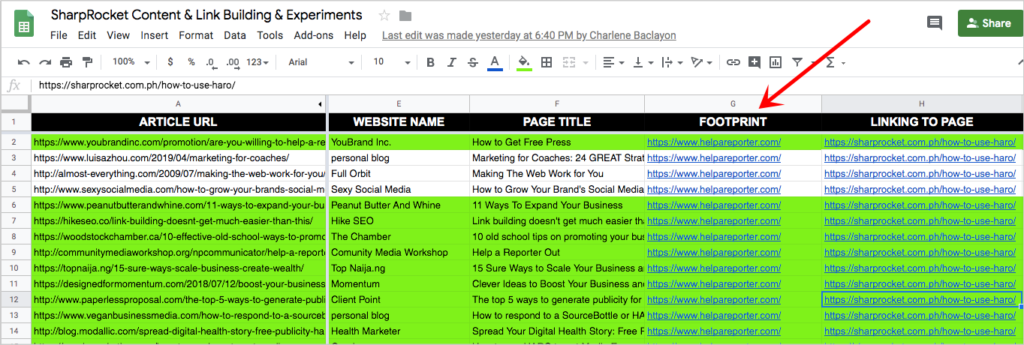
With that, I've sent a quick personalized email sharing the guide. It is a basic linker outreach process most of you are familiar with.
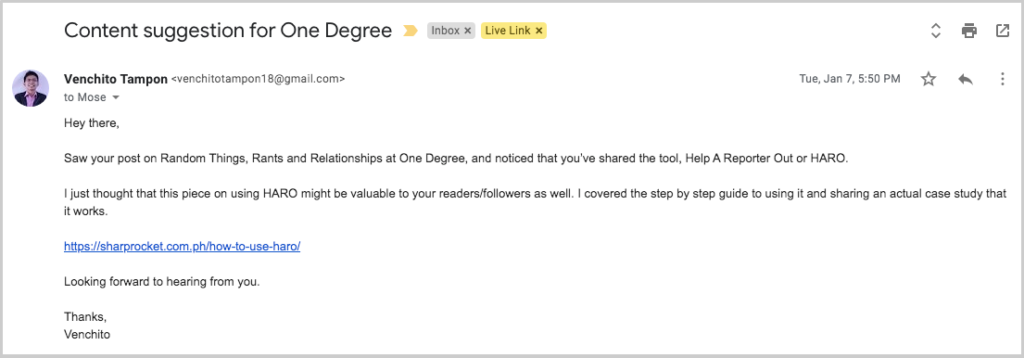
But the value proposition here is that if publishers would want to add more value to their readers because they've mentioned and reference the tool (and don't have the editorial space to expound on it), they'd simply reference a good guide with a blog link.
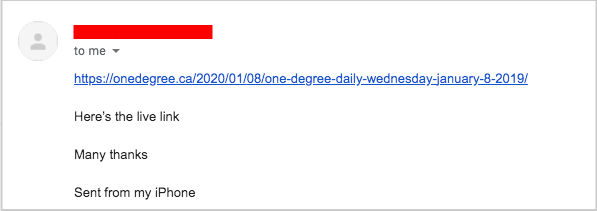
That is where your brand can take advantage of.
How to create product reviews and build blog links to it
Check any tools you can include in your blog posts (at least give a quick step-by-step process in using it) or entirely create a new post about the tool.
Make an entire review of the tool or include a shortlist of steps in using the tool in your prepared content.
When prospecting for possible blog opportunities, ensure that bloggers must have existing articles that mentioned the tool itself. Otherwise, your pitch won't be relevant to them — you lose the opportunity for that reason.
You also want to make sure existing articles should have mentioned the tool descriptively. A good spot even if the blogger emphasized the tool in its blog post (apart from writing a review about it).
This gives you a hint that the blogger used the tool and would be more interested in any relevant further guides.
4. Resource assets for linkable markets
The friction to build blog links for niche blogs is higher, but not resource assets for linkable markets.
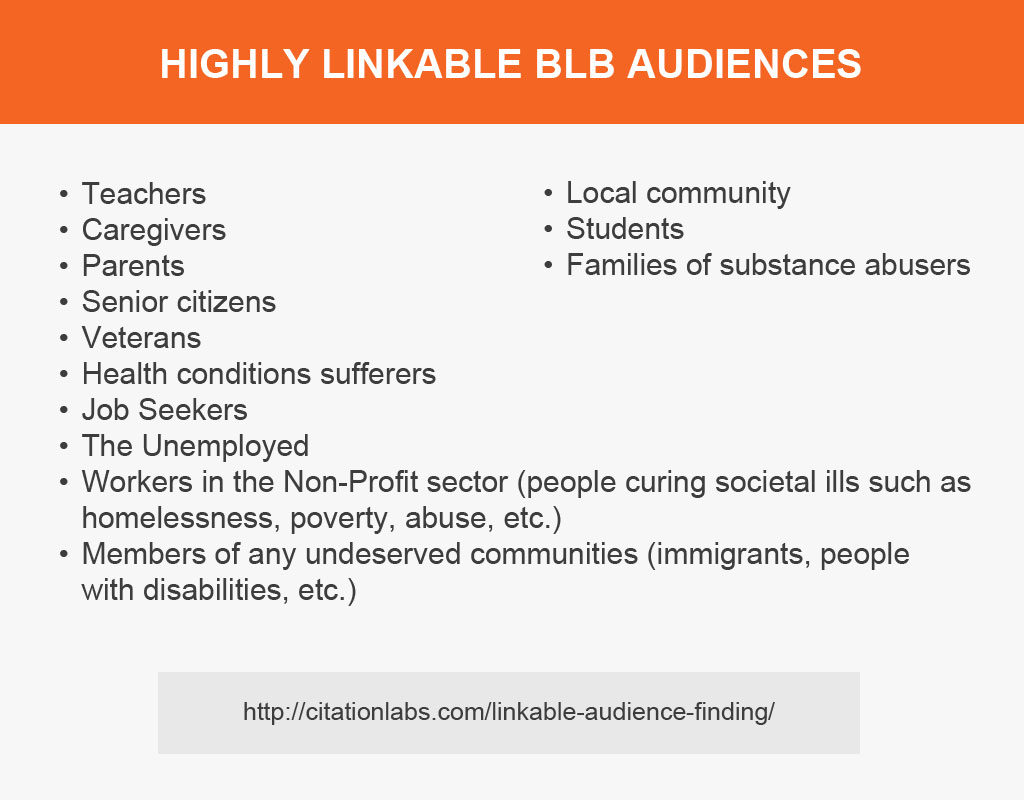
A few reminders when tapping these audiences for your resource guides:
- Ensure that the audience you choose matches your brand's audience — you're likely to get residual benefits, such as converting your readers to consumers if it's an actual fit.
- There isn't any conflict with your potential customers. For example, when you're writing a sleeping guide for veterans, do you have any ideas and products that promote sleep well-being?
How to build resource assets and build links to them
Tap one linkable audience at a time. Produce the most comprehensive targeted resource guide for that market.
Then focus your prospect and outreach efforts to promote the resource guide.
You can use Citation Labs Link Prospector to scale link prospecting.
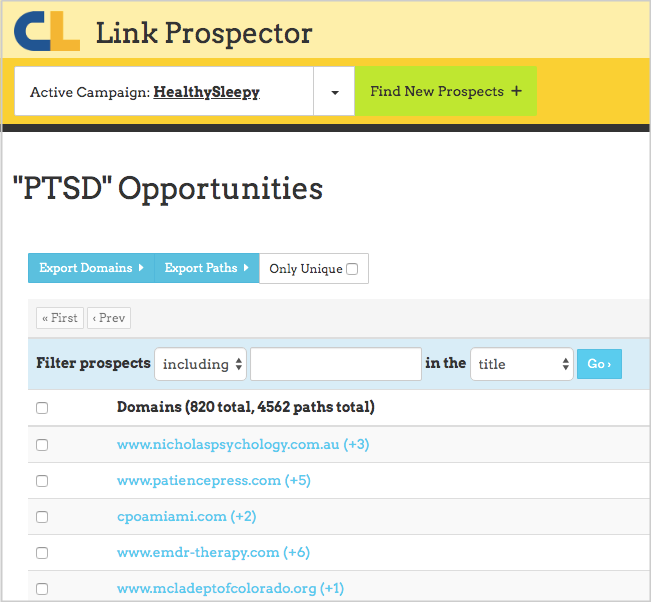
Once you've collected the backlink targets, it's time to get the best ones.
Here is a tool from Granit Doshlaku that can help you qualify sites that are relevant and have good authority for your resource guide.
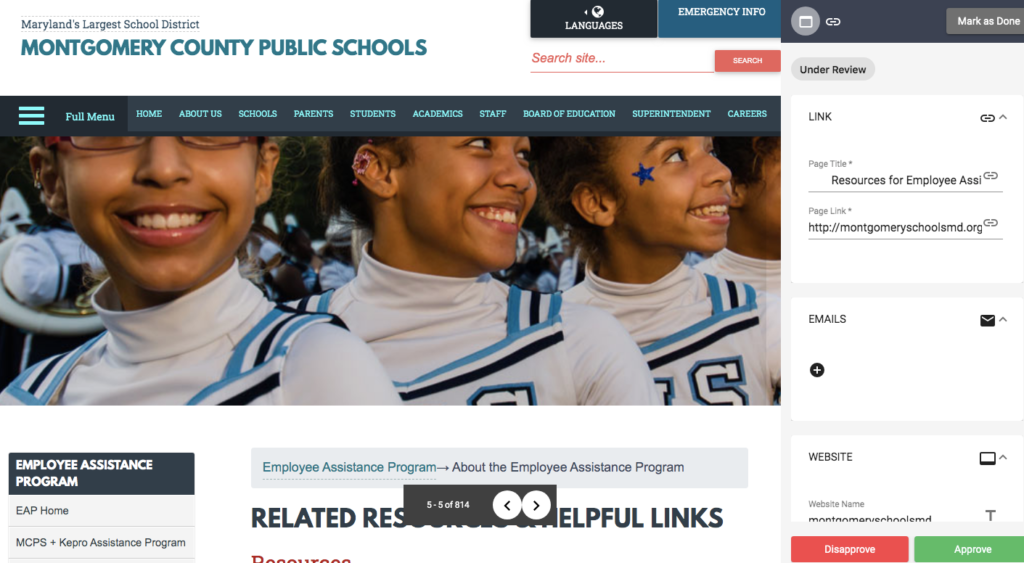
The tool is free and allows you to check resource pages of different websites on the same tab.
You can even include notes on each qualified page.
Later on, you can export the list of qualified blogs.
Once you've got qualified blog prospects, reach out to them and simply share your resource guide.
You don't have to push linkable markets to link to you. If your content asset is worth linking to, you can expect a blog editorial backlink to your page.
5. Create local guide resource links
The earlier link building technique is for linkable markets that have the capacity and willingness to provide blog links to your site.
This time, it's for any local niche blogs and resource curators that are topically interested in your content.

If you're a local brand, you can search for any topics that are listed in the form.
Start developing those lists' content and build links to them through manual outreach.
On editorial links
Editorial links are the type of links we, as a link building company focus on building for our clients of different industries. And we've been seeing results all over the place.
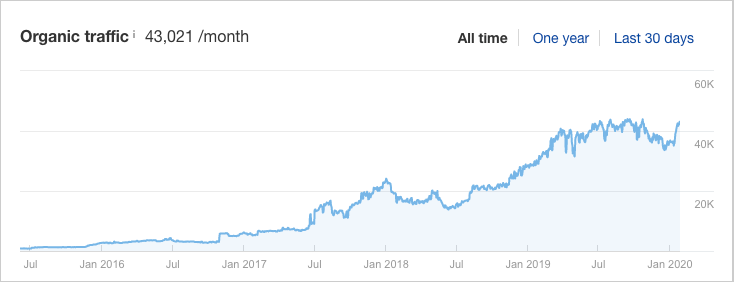
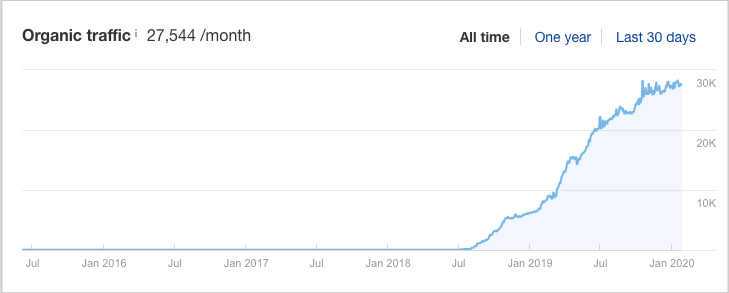
What makes editorial links the most powerful type of links, in my opinion, is they cause other effects beneficial for the site's entire branding:
- Drives qualified traffic through descriptive link texts on linking pages
- Established relationships with publishers and industry experts through guest blog invites
- Gives new opportunities for upcoming bloggers with the potential to make their own names in the industry
- Helps the strategy team (or any who conducts planning or strategy for link development) to assess the required estimated number of links for a specific page based on new links' current impact on the page performance (comparatively looking at its other competitor's similar content performance).
- Adds more contextual relevance to the linking page based on determining phrases surrounding editorial links
Whether editorial links are acquired through social sharing from people who initially shared your content, or through a reciprocal method in a form of a free tool, badge, or any other incentives. Send your incentive with a sweet spot personalized email.
Strive to get as much of that type of link with the highest quality in mind.
On relevance and authority
When pursuing editorial links, it's important to seek the highest quality.
But what does quality mean in links?
Quality means relevance and authority.
Relevance is two things: domain relevance and URL relevance.
Most of your efforts should be placed in the highest URL relevance and highest authority of links (HADR). That means getting a link from a snoring article to your article about snoring.
With these things in mind, here are some scalable link acquisition tactics to build blog links to your site.
Remember that any of the techniques below would require existing content or a new content asset to be published on your blog.
Key Takeaways
Indeed, there are many innovative ways to build quality blog links.
The aforementioned tactics above have been tested on our own sites and for our clients. If you wish to have a dedicated link building campaign for your site and/or for your clients' websites, you can check out our link building services and we'll help you out in any valuable way.
What is Micro Content and How to Use It to Build Links
What is micro content?
As defined by user experience expert Jakob Nielsen, "micro content" is a small group of words which can be skimmed by the reader to understand the wider message of the article.”
Using it perfectly to fill in your editorial content calendar will help you solve your content shortage.
That's not to say that micro-content is just for quantity alone, but you can also make their quality better with a good strategy and execution.
Why Micro Content Works Today?
Here are some reasons why brands take micro-content pieces into consideration — which speaks also for its advantages over other forms of content.
Easy to consume
A micro-content piece has the ability to show a clear message or point in just a few seconds.
Whether it is a 30-second or minute video or a short story comic, it has the advantage of drawing the attention of customers to get to know about the brand.
Instead of bombarding potential customers with long-form guides, which not all people can consume well, why not produce easy-to-consume content that gives people easy to digest information — one at a time?
Develops creativity for content creators
Given that you have to think of ways on how to turn large pieces of content into micro web assets, you develop your creativity over time.
You discover methodologies to scale content creation as fast and as better quality as you can.
Produce in small budgets
Nowadays, the barrier to entry in content marketing is low.
You can start creating micro content pieces with a small budget. By putting a few bucks into creating visuals, writing short-form texts, and publishing them on your blog, plus distributing all of these assets on social media, everything can be started as soon as you want it.
Highly distributable
Content marketers start with creation, but it doesn't stop there. Content like micro assets has to be distributed well to places where consumers engage in.
How to Use Micro Content to Build Links
Link building requires content to effectively share value proposition to prospect linkers. Without it, it won't be easy to find people giving you backlinks without any value provided by your brand.
Micro content gives opportunities for small to medium-sized business owners to scale link building. Even big brands can do it to build momentum with their content promotion, as they can easily develop hundreds of assets ready to be distributed in many targeted web places.
On leveraging repurposed pillar content
I've shared this methodology popularized by Gary Vaynerchuk in my guide about content marketing strategies for small businesses.
It is a simple methodology of efficiently producing micro content pieces.
Start with a document pillar content, repurpose it into micro assets, and distribute them across social media. Here is a flow image of how it looks like.
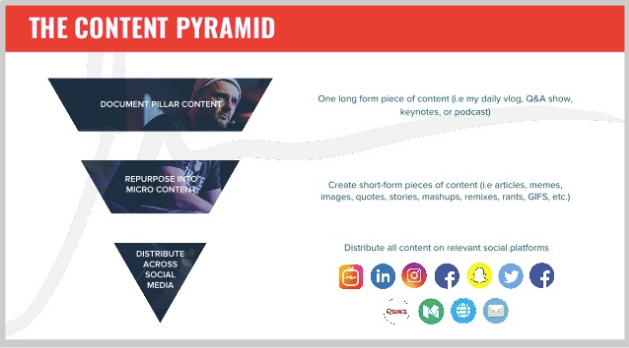
The original purpose of the model is for social branding, but we can replicate this exact model to build authority organic backlinks to our websites.
1. Turn sales-driven assets into distributable micro content
Every company has sales teams. Depending on its architecture, type, and processes, they use a document assembly that allows them to get a good flow of sales process, deliver things to prospective clients or customers, and/or satisfy them with enough inputs for buy-ins to offerings.
These documents include the following:
- Request for Information or Proposal (RFI / RFP)
- Statement of Work (SOW), Contracts and Invoices
- Customer Project Plans
- Sourcing channel partners with relevant vendor inputs partners need for each of their document categories above
If your brand can request any of these assets to be publicly distributed for brand building and content marketing purposes, you now have an opportunity to massively produce micro content.
How to build links to sales-driven micro content:
- Appeal your micro content to salespeople who are likely to share your content on blog posts or social channels. For example, financial advisors, if touched well by finance brands, can bring a good amount of mentions on industry blogs these FAs belong to.
- Spend a couple of bucks for social advertising to get initial eyeballs distribution for micro content.
- Target the most vocal people in your industry for social sharing. More social proof of micro content increases its connectivity factor to people likely to give links to your site.
2. Recover published assets
After content launch, it's easy to forget high-quality assets that have performed well in terms of links and social shares but were not revisited and updated to gain even more results.
Start going through some of your best assets. You can use Ahrefs to find high-performing linkable assets (Top Linking Assets).
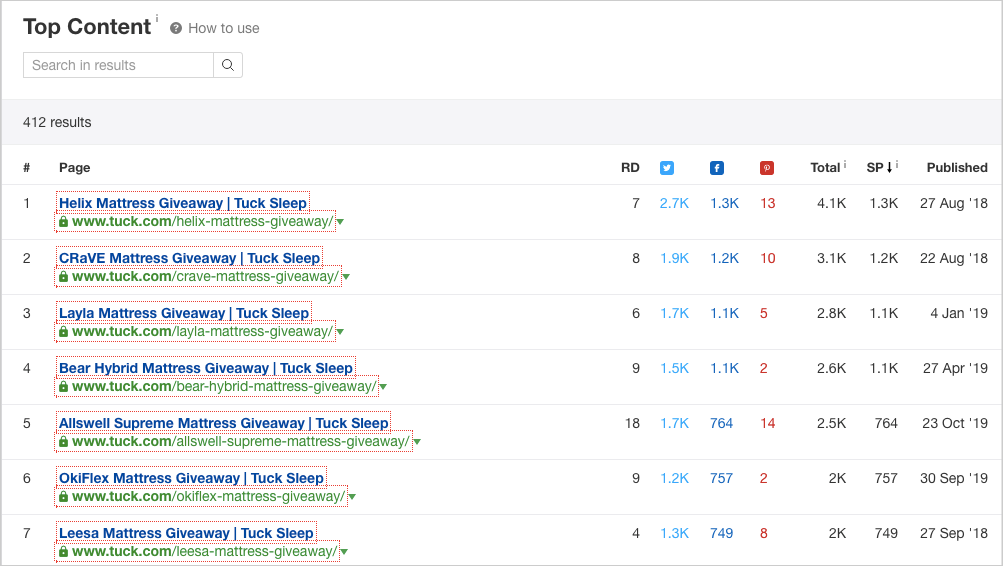
Assess which ones can be cut into pieces of short-form texts, or small visuals, or even turn content type into another content type (e.g. texts into visuals).
Here are some published assets you can recover, update, and/or turn into valuable micro content pieces:
- Frequently-asked questions
- Full webinar recordings
- Video recordings of presentations, speaking engagements, and any form of public appearances (e.g. media interviews)
- Long-form informational content (definitive guides on your subject matters)
How to build links to recovered published assets:
- When turning huge assets into micro pieces, assess if those micro content can stand alone its message. Otherwise, it won't be perceived as much as valuable as compared to being tied into a large one.
- Find similar bloggers, publishers, and content creators who have linked to your big assets in the past. Reach out to them and share your content.
3. Reclaim branded short-form texts
Branded short-form texts are the content of your site you've originally started or cited. These can be your own coined terms or your own definitions of terms.
In the likelihood that those branded short forms were distributed, there were publishers who included your piece but didn't credit your site as the source.
To find these people, you can use Google search and search for your exact definition of the term or whatever short-form text you have (e.g. a descriptive technical survey points).
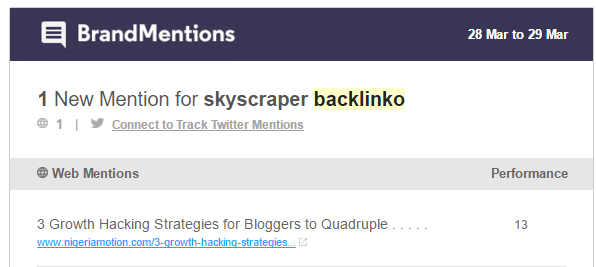
If it's a coined term you've popularized, you can use BrandMentions or Ahrefs Alerts to track any mentions of a particular word or phrase.
How to reclaim links from branded short-form texts:
- Monitor regularly publishers who included your short-form texts in their own content. Build relationships by sharing their content on your own social profiles.
- Reach out to those publishers for brand link reclamation — don't force them to link to you (as some are in the habit of doing so). Simply ask to credit you as the source.
4. Invest in comics
One of the interesting content trends today is scaling comic creation.
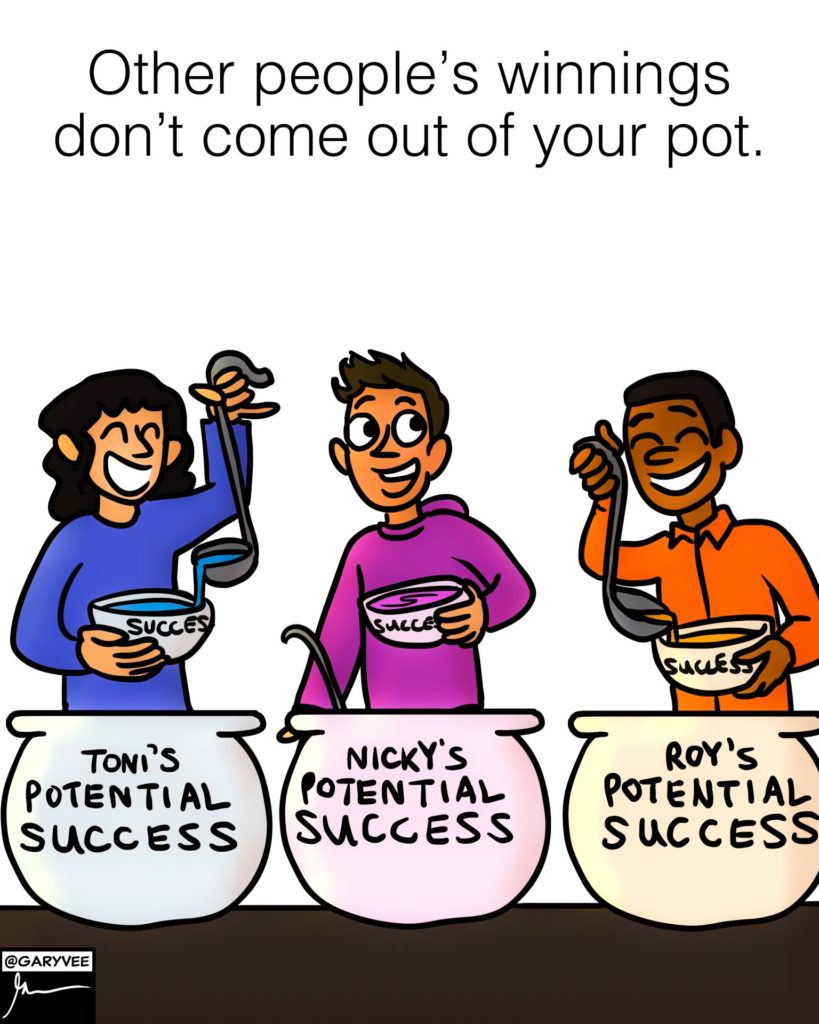
You see most of this micro content type on LinkedIn. Gary Vaynerchuk, for example, massively produced comic series that tell about his messages across his audience.
You'll see comics as shareable content all over social media places because it quickly conveys stories of people, ideas, and concepts.
Apply that to your own industry and be the first one to produce short-style comics.
How to build links to comics:
- Work with influencers in your industry who have a substantial social following — so you can expect a faster distribution of your comics once it is published.
- Reach out to independent bloggers that allow a variety of content formats in their blog posts. Offer the content of your comic as a way to add value to their current readers — a new style of learning consumption.
5. Rank for "memes" keywords
Memes are another great easy-to-produce micro content.

There are many ways to start with this one — either to do it yourself using meme generator tools or hire or get your graphic design to produce sets of memes for your brand.
You can start with popular Facebook memes that have been rolling around contextually about your niche. Then go beyond that once you have some visibility with your published memes.
How to build links to memes:
- Get visibility on social platforms to make it go viral or have some social users with a good following to start sharing your memes.
- Rank for meme keywords (e.g. finance memes) by creating a page on your website dedicated to niche memes.
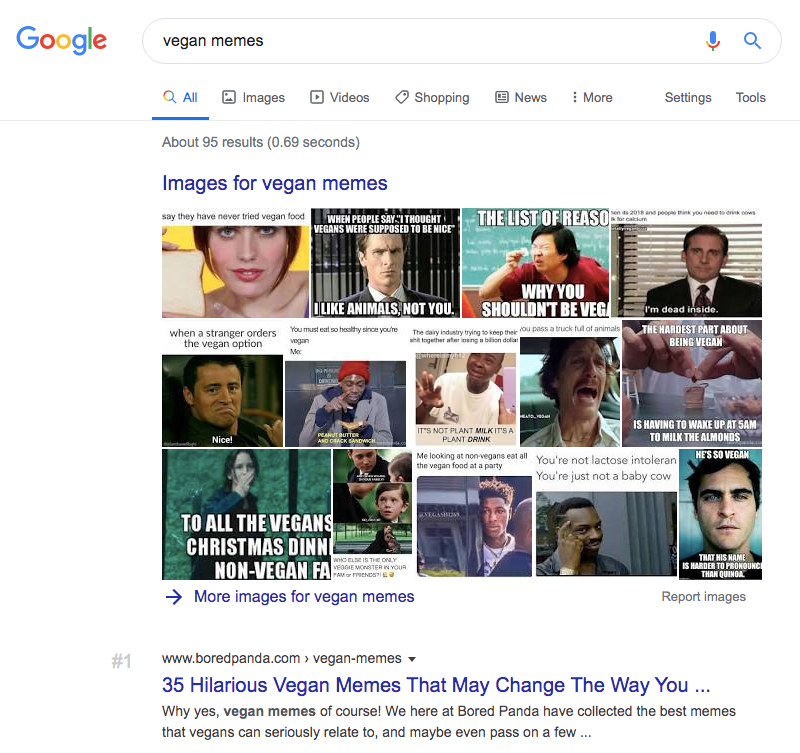
There are other types of micro content you can test for yourself and produce a series of it this year. Here are a few more examples:
- Custom illustrations or photos that convey some sort of quick tip or fun fact
- GIFs
- Shareable one-liners
- Interesting statistic
- Videos
Be creative with micro content
Establish credibility through the production of different micro content mentioned above. Start sharing them on your own distribution channels and gain new organic backlinks month over month.
If you're looking for link building services, partner with us and start your campaign today.
How to Use Quora For Marketing
If you are marketing a product or service, educating your audience is the best way to sell.
One of the best ways to elevate your authority online is to answer questions your target people care about. By helping them solve problems, gain new insights and ideas, and learn to do a thing, gives you the leverage to gain their trust — leading to more followers for your personal brand.
How to Use Quora For Marketing
Here are four ways you can use Quora for marketing:
- Prioritize most visible questions
- Re-answer questions you’ve answered in your blog
- Invest in adding higher value with your answers
- Include other content formats in your answers
- Discover new headline topics from questions
Prioritize most visible questions
Like any other content marketing strategy, you want to start by looking at the highest yield of your resources once you allocate them to an initiative.
In Quora marketing, this means you identify questions that have the highest visibility. You want to get the most out of your efforts by ensuring the questions you've answered are ones receiving the highest views from people.
One way to do that is to reverse engineer questions that are currently ranking in search results. You can use Ahrefs to find ranking pages in Quora. Filter pages based on your topics of choice. Now, you have questions that are likely to receive continuous traffic.
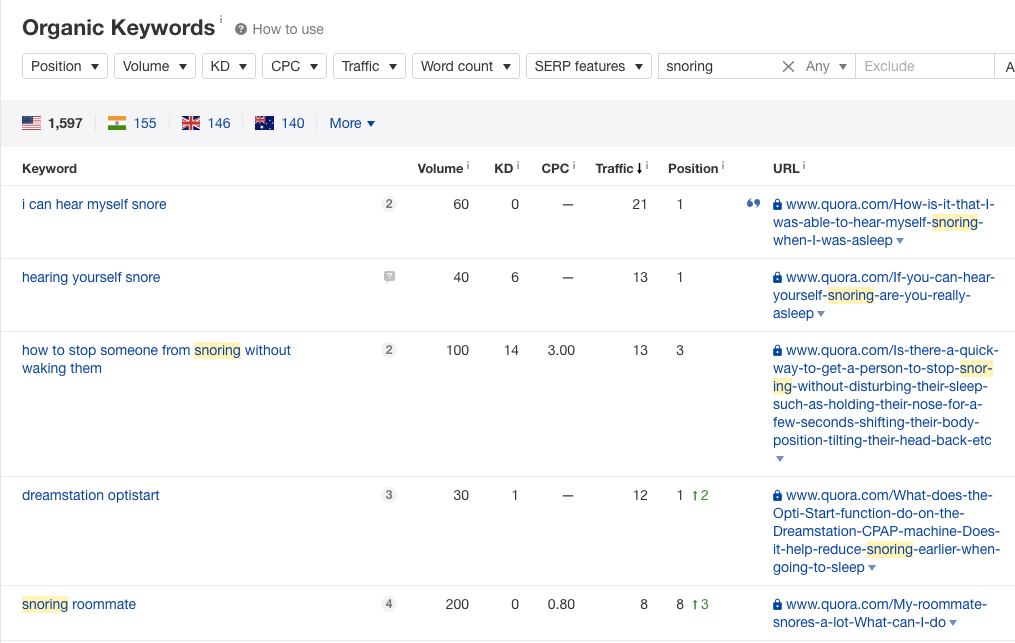
Another technique to discover the most visible questions in Quora is to check the "Most Viewed Writers" on topics you're interested in.
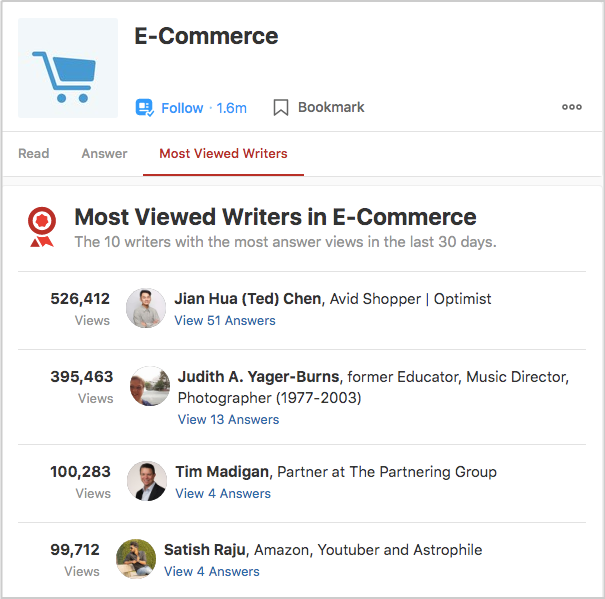
Simply choose the topics of your choice. Then view the "Most Viewed Writers" for those topics. Check the top profiles in the section. On their profiles, you'll see a bunch of questions they've answered.
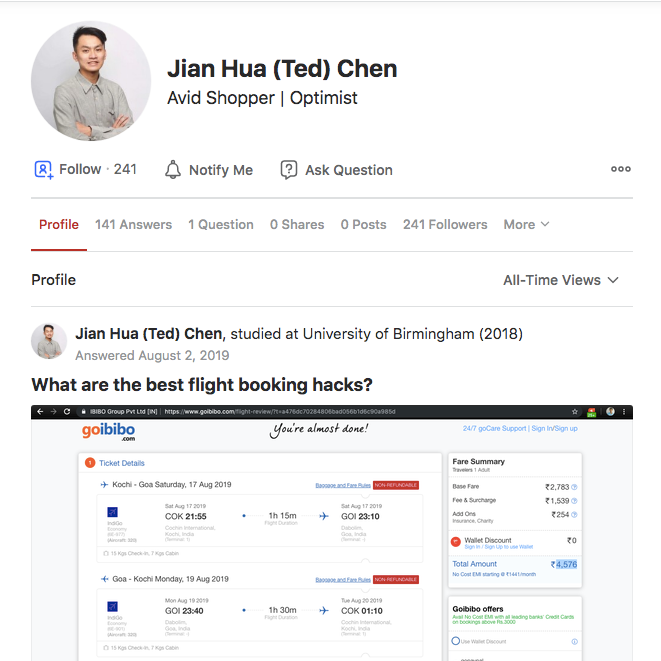
Add those questions to your list. Then later, decide if they're worth giving attention to answers.
Re-answer questions you've answered in your blog
Content distribution is a must after you've published your content piece. Many content creators start hitting the publish button without any plans to promote their web assets. They celebrate but don't take the time to let their audience know about their piece.
Start looking for evergreen content assets on your blog - ones you've published before but remain relevant to your audience.
Match it to Quora questions by searching for any relevant questions you can answer using your inputs from your content asset. This will take some time to dissect your page to see any connected insights to questions you see in Quora.
Invest in adding higher value with your answers
If you are targeting the most visible questions, you're likely to end up seeing multiple answers for each of them. Quora content creators produce different answers — a few of which are value-adding to the target readers.
Now, this is the time where you think of ways to add more value to the question itself. Here are some tips to help you craft a better answer:
- Read other answers to the question. Look at how other Quora writers deliver their insights. Ask yourself, are they missing some important inputs here? Do they directly answer the question?
- Share experiences, case studies, and stories to prove your points — not just to make your answer look appealing. The goal is to provide value. This means you check how your experience can help the person solve a need (an answer to a question).
- Don't sell your product or service, if it's not connected to your answer. Make up your mind that you solve the answer with the best insights you've got not with spam links to your money pages.
Include other content formats in your answers
Relevant content marketing is putting enough effort into making your content consumed by the majority of your target readers.
In Quora marketing, you include other content formats to your answers for other learning styles (besides reading).
You may add videos and images (i.e. infographics and illustrations) to your inputs. One tip is that if you know your answers might be quite long, insert images or videos in between paragraphs to get readers engaged.
Discover new headline topics from questions
If you are looking for content strategies for organic growth, you can try getting inspiration from Quora questions.
One beautiful way to make your content cut through the noise of so many other topics is to know which headline topic would you choose.
Part of that is discovering the top questions in Quora related to the subject you're writing about. Tweak your headline based on what most people are querying in.
Here are some useful guides on using community topics for copywriting your content's headlines:
Benefits of Using Quora For Marketing
Brand Exposure
Quora gives you the opportunity to expose your brand to audiences you never had a chance to interact with. That is a good chance to add more people to your customer base.
Brand recall happens when your brand is exposed continuously to the right audience. As they always see your brand bringing value through expertly-crafted content, it brings the impression of what your brand is about and what it purposefully delivers to its audience.
Quora's exceptional reach is without a doubt. Either you want to try to tap a new audience with topics still aligned to your brand,
Thought Leadership
It takes a while to build thought leadership online. People have to know who you are and what makes you different from other similar personalities.
However, content distribution through Quora helps you get started with thought leadership. Over time, people will naturally come to you for media and blog interviews, advice for their brand activities, and company partnerships.
Audience Insights
You can't market effectively to your audience without knowing their changing behaviors. That includes what topics and trends they're looking at, their current situations through questions they ask, and what forms of content they mostly consume.
Link Acquisition
Constantly getting links to your website isn't easy. It requires the discovery of new ways to provide value to a potential linker with hopes of links.
Quora helps you do link building to your website from answers to the audience's questions. Make sure that your linking page serves as a reference for more information to your answered query. It should be relevant and must be of use to readers with more insights about the topic.
Referral Traffic
Given that will be an insertion of blog links to your content, you're likely to receive traffic from Quora. That's the reason why it's important to place links properly where it is normally seen for more references.
Search Visibility
Quora has an increasing demand for searches as it ranks for several keywords in many industries. Given its engagement and low search competition for questions (keyphrases that have search volume), pages of Quora get most of the search visibility.
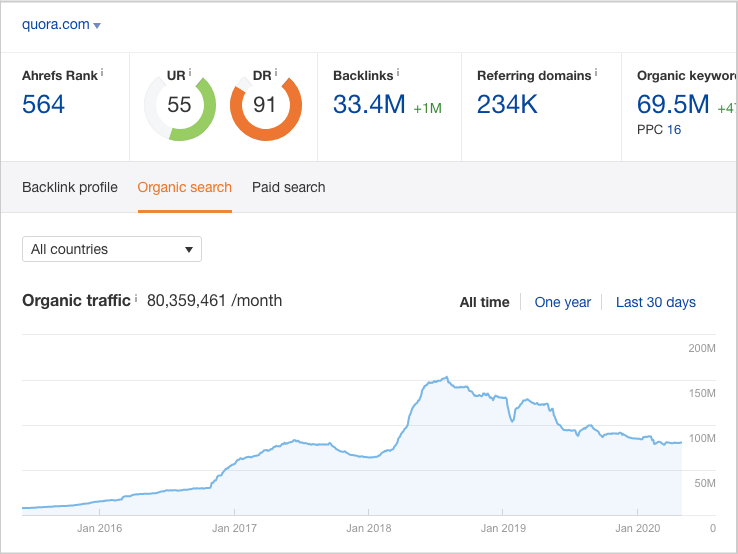
In cases when questions you've answered rank for niche phrases on search results, you get the benefit of more exposure for your answers.
On Maximizing Community Websites
With an abundance of time, marketers must be willing to put more hours into bringing value to their audience. That includes providing solutions to problems, and thought-provoking answers to questions.
Quora is a good community place to start engaging your audience, provide answers to product-related questions, and establish thought leadership in your space.
More Than The Common Factors In Link Diversity
When people discuss link diversity, they basically refer to a methodology of getting links from various kinds of pages of different websites.
Such link diversity includes a ratio of homepage links to deep page links, a mix of do-follow links and no-follow links, anchor text variation, links on different page locations (link placement), links from websites with different Domain Authority (DA), and links from websites with different TLDs.
These common factors of link diversity are critically important, but a newbie SEO professional wouldn't have much time to check each one of these factors while they are executing every facet of a link building campaign.
It's hard to diversify if you're into the execution stage. The best that I recommend is to go all-in with the strategy - i.e. understanding what kind of pages need to acquire so you can concentrate your efforts on work alone when it's execution time.
How to Diversify Your Link Profile
Here are four useful tips to help diversity your link profile in the strategy phase:
- Employ different methods.
- Have different link building groups working on different tactics
- Tap different linkable audiences
- Leverage latest and recent link opportunities
1. Employ different methods
Every link building tactic is normally targeted to a specific type of page--for example, broken link building for links pages, scholarship link building for scholarship pages, and blogger outreach for guest blogs/articles.
By applying different link acquisition methods, you are able to target different types of links from different pages — allowing you to diversify your link profile.
Of course, each link building tactic will require more than one person to execute all phases of the campaign. If you want better results, your link prospectors and outreach specialists should be well-trained to execute their tasks.
This idea may be turned down by solo link building consultants given that they don't have a huge team to facilitate all of these methods. While that's true in a sense, they could still employ these methods one at a time.
For instance, it's possible to conduct a blogger outreach for one solid content piece for two months, and then work on a scholarship campaign when all you're doing is waiting for links to live in your blogger outreach campaign. You can then switch your resources to another link building method
If you discovered one type of link that demands huge opportunities in your space (i.e. summer housing pages on .edu sites).

By doing so, you're not limiting yourself to one or two types of links; you vary your link type through a variety of methods.
2. Have different link building groups working on different tactics
This is an effective strategy that I've found to be true to a few of the clients we're working with. We are not the only outsourced link building provider, they got another one or two link building agencies or teams working with them.
Not only are we working for different pages (dedicated pages to build links to), we also employ link building tactics.
That allows them to diversify the types of links they're getting on a month-to-month basis.
So if you've got a huge budget on your plate, you may assign different pages and work towards different tactics with the help of your outsourced teams.
3. Tap different linkable audiences
In a white-hat style link asking approach, where we prospect for resource pages, the basic idea to scale things up is to tap different linkable audiences for each content you create.
So let's say, you will create a piece about bullying, another piece for kids and teenagers, and there may be content assets dedicated to veterans and PSTD sufferers.

These are linkable audiences you can target for each of your content assets. So it's not just a variety of methods you're applying, you're also targeting resource links from different topically relevant pages.
4. Leverage latest and recent link opportunities
When SEOs talk about link diversity, they focus more on anchor text variation and other common factors I mentioned earlier. While these are all part of our topic today, link diversity is also about finding and pursuing recent or latest and credible link opportunities.
If you can build real links that translate to real business value like getting coverage for a story on a top industry news outlet, it'll be worth your time receiving additional business exposure and assisted conversions.
Start with the recent links of your competitors. Plug in your competitors' domains in a link analysis tool like Ahrefs. See their recent links for the past few months and identify what they've produced or covered on their blog to assess if these are replicable or could be turned into a unique angle of yours.
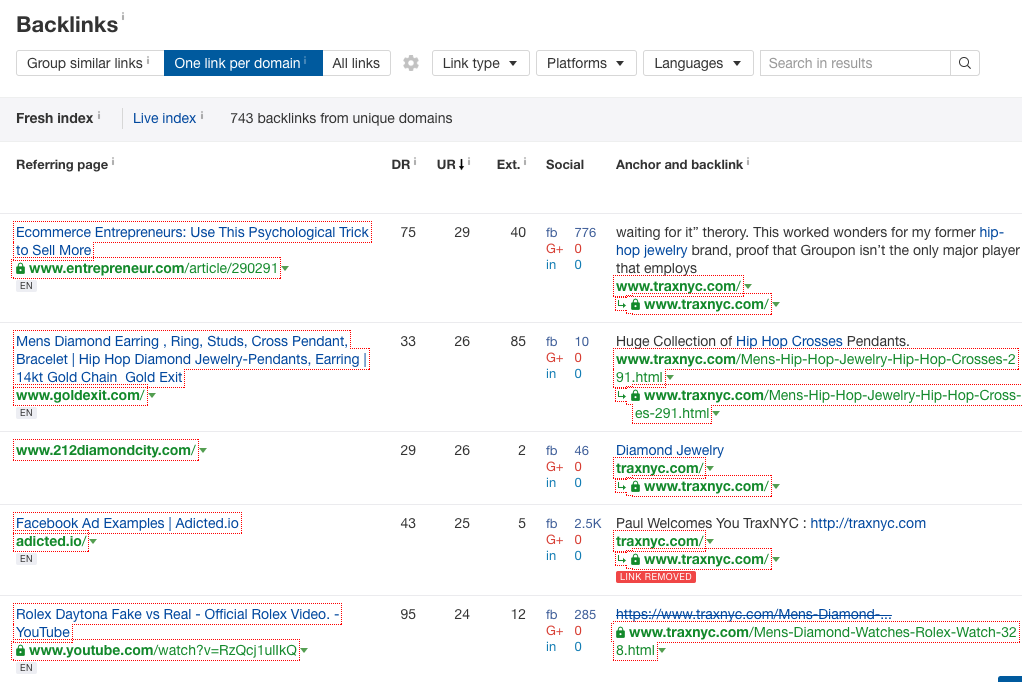
By getting a more systematized approach in pursuing authoritative links, you're likely to diversify your link profile — with both organic and manually-built backlinks.
You can check out this anchor text optimization guide by OutreachMama.
BUILDING LINKS THE NATURAL WAY
When a natural backlink profile is forcefully done and isn't done really naturally, there's a chance that what has been aimed won't be achieved — a natural backlink profile indeed.
Employing a variety of white-hat link building techniques, customizing campaigns to suit different linkable audiences, pursuing a variety of links to different web pages, and pursuing credible links at your own best are ways to really diverse your backlinks.
How to Report on Links
Reports depending on the type of arrangements you have with your client or brand.
If you're doing it in-house, the report on links may be part of your overall search performance reports. It means it is geared towards the impact of links that have on your organic search.
Of course, there are so many factors that can get your site's to rank (besides links) and you couldn't simply separate the link factor itself as the sole indicator of success — increase in organic traffic for a specific month - let's say.
However, if you have a page solely investing your resources and efforts into building and earning links, you could have a report for the improvement of the performance of that page.
If you're working in an agency (or you own one), the same thing may be applied if you're offering full-suite SEO. What you want to do is to ensure those links you've built have helped the website attain its desired organic rankings and traffic.
How to Report on Links
Here are three simple steps to help you make reports on links:
- Make your reports easy to digest with emphasis on the business value of links
- Assess the progress and small wins
- Discuss next plans of actions
1. Make your reports easy to digest with emphasis on the business value of links
There are many samples of link reports available out there, but one thing you should deeply understand is the idea of simplicity.
The moment your client/in-house team/CMO looks at your report, could they easily digest the information?
Bar graphs, pie charts would only make sense if there is a proper orientation on the value of links for the brand — especially if you're dealing with business owners who desire more revenue from their online businesses.
2. Assess the progress and small wins
Link building is an ongoing campaign and doesn't stop after you rank that one content guide or landing page.
As long as you need more revenue from your business and drive more traffic through search, you've got to strategically invest in link building.
Assess the progress of the campaign. If you're dealing with clients, don't let them second-guess your work. They need proof that what you're doing has a business impact on their brand. Check again the BI approach to link building to give you more insights on the topic.
3. Discuss next plans of actions
Progress requires planning. Whether you do it internally with your SEO team or collaborate with content teams of your clients or the business owner itself, you want to make sure you make plans.
Whether it's planning for more targeted links to a specific landing page or creating linkable assets, do it in a concise and organized manner.
Let me walk you through some of the link reports you can generate to show the performance of links.
What Types of Reports to Generate?
1. Prospecting and Outreach Inputs
For big brands (or enterprise link building), normally have reviews of every prospect list. This helps them ensure that your agency follows guidelines in terms of metrics you've set beforehand.
That's the reason why it's extremely important to manage expectations at the start of the campaign. Specifically on what link metrics both you (agency) and your client/brand will agree upon.
Those reviews of clients require a prospecting list, which includes:
A. Total qualified sites
Based on agreed metrics, the report shows the list of websites (or just the total number of prospects you've vetted on) and have passed the benchmarks (relevance & authority) through proprietary metrics and a keen eye on quality.
B. Total contacted sites and responses
In most cases, this particular list isn't included in the report anymore. In-house managers or contact persons for link building assume different contact rates and response rates for each link development campaign.
However, some managers are granular in their approach that they tend to look at those contact lists, and even ask response rates from time to time.
2. Basic Link Deliverables
Common link reports are deliverables.
These reports may typically just be in a spreadsheet or pdf form.
Details include:
A. List of live link URLs
This is a no-brainer. You want to show the exact pages where you got links from.
B. Proprietary metrics
Alongside link URLs, you should be including other metrics such as the Site's DA/DR and the Site's estimated organic traffic (using Ahrefs/SEMRush).
These are handy reports you can easily outsource link building or hand over to your junior SEOs. As simple as it sounds, the organization of all these live links, when done for years, will be time-consuming.
So you want to make sure you have a spreadsheet or a data collector to organize this for yourself or your team.
C. Number of acquired links per month
For large-scale campaigns or for agencies with multiple clients, you want to have handy reports for all campaigns showing the number of acquired links. It could be automated as possible to easily generate it when you need it the most.
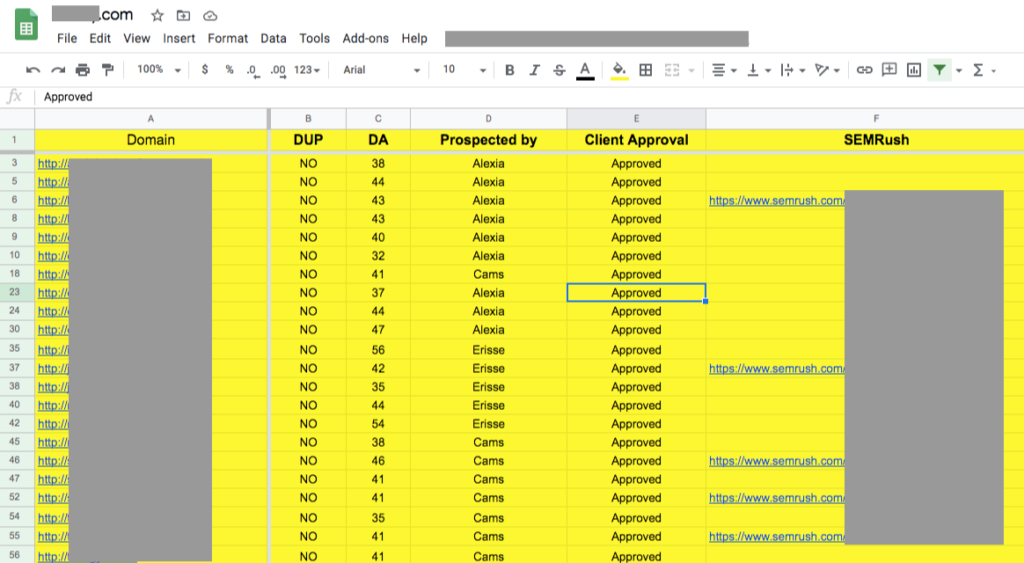
3. Impacts of Links
More than lists, what you should focus more on when generating reports is the value of links it has for the brand.
Regardless of the types of links, is the site bringing value to the overall site performance?
We've covered lead and lag measures before, but let's reiterate it again here.
When you're just asked to generate links, you're not just trying to hit as a leading indicator. Links could hit a lagging indicator of search traffic.
The defining value of links that you're acquiring is the rankings of the content piece you're creating (a specific page) you're building links to. That makes a lot of sense for business owners as this creates and manages expectations from a search traffic perspective.
A Business Intelligence Approach To Link Building
Cody West covered a comprehensive BI approach to link building which gives you more details on different factors to add to your reports.
Tactical
This answers the questions of how many links do you have to build next month or quarter of the year.
Based on the backlink gap between your site and your competitors, you'll then strategize how to position yourself in the market by targeting a certain number of links with a good benchmarking of link metrics.

You could add this section to give your client a more detailed view of what to expect from a link building perspective.
Tip: Make sure you balance it with the notion that links aren't only the moving indicator of success for rankings. They should consider other aspects of SEO to better expect more results from the overall search campaign.
Resources
Based on the resources you have, how much will cost you to generate a link? And long does it take you to hit your acquired number of links per month?
If you're an agency, the resource section of reports should be reserved for you. This will help you and your junior SEOs to start conversations around the following:
- Price of links — given you can calculate your cost per link per client, you can assess if you'd like to increase your price per link — assuming you're offering link building as your stand-alone service.
- Outsourcing link development projects — is it worth your time to do it in-house or should you hire an agency to do white label link building for your clients?
Answers to questions may not be part of your reports for clients, but only for internal use (in-house). This gives you a well-meaning approach to how you will attack your internal link building management.
Value and Cost
Link building budget may just be part of another expense report of your client or your company (if you're in-house).
Nonetheless, if you focus, emphasize, and lean more towards the business value of links, you're likely to get more buy-in, approvals for more business investments on this crucial and vital aspect of SEO.
18 Habits of Highly Effective Link Builders
Many resources and articles recommend effective link building tactics, processes, and methodologies that are necessary to provide result-driven link acquisition campaigns. Unfortunately, they don't often give tips on how to become a better link builder in general.
Last week, I reached out to top link builders and asked them one question:
What are the best habits of link builders?
Here's what they said.
1) PERFORM SOLID COMPETITIVE LINK ANALYSIS

Julie Joyce, Founder of LinkFishMedia
I think that being able to perform a solid competitive analysis is key for any good link builder.
If you are part of a team and someone else does this, that's great too, but someone needs to be able to really sit down and critically analyze a profile. In my mind, one of the best pieces about this is from my lovely friend Jane Copland who wrote about it a few years ago. There have been many posts about competitive analysis but this one really sticks in my mind as being incredibly well done.
2) READ CONSTANTLY

John Doherty, Founder of GetCredo
The best habit of a link builder is constantly reading.
I think this is an important habit because link builders need to be aware who is writing online and where they write. The Internet has moved away from everyone having their own place to write and instead moved to a place where writers write for many different publications. You don't go to TechCrunch to read everything - you find a writer there you like and read all of their stuff.
3) BE PERSISTENT

Lyndon Antcliff, Founder of CornWallSEO
Yes they all mean the same thing, but link building isn't that complex. There are really only 3 ways to get a link. Ask someone for a link. Pay someone for a link. Build some content and hope that the people who see it will link to it (with a bit of promotion of course).
You can mix this up of course, but it's essentially all the same. I could drone on about various tools and the techniques of the day, but if you ignore the fundamentals you become a slave to those who are marketing tools and techniques.
Link building is very simple and there is no need to complicate it.
4) SET RSS FEEDS

Debra Mastaler, Founder of Alliance Link
Setting RSS feeds for a list of terms and reviewing them daily is the best habit a link builder can adopt. Keep in mind it matters less what you do and more where, and being first can often trump being "best".
Know where the sources are and what's breaking in your space.
5) GREAT FOCUS AND DISCIPLINE

John-Henry Scherck, Growth Marketing Manager of DocSend
The best outreach professionals that I know have great focus and discipline.
They don't check FB, Reddit, Twitter every twenty minutes. They diligently work through tasks and keep their heads down. They execute. They prospect more sites and send more emails. They are efficient.
6) READ AND STUDY CONSISTENTLY

Devin Harper, Marketing Director of Nifty Marketing
Understanding how and where to build links in a Penguin era doesn't come without consistent reading and studying. Link acquisition is the most difficult aspect of SEO to master and is often a struggle for online marketers. The most important habit link builders should develop is learning something new every day. The more you know, the more you can do. There's a lot of valuable material out there from Eric Ward, Michael Martinez, Jon Cooper, Garrett French and others who have devoted countless hours to mastering link building and they share their tips and tricks freely in most cases. Successful link campaigns all start with an idea
- and the more you read and learn about link building, the more ideas you'll generate when the time comes. A tool I use to stay organized and on top of my studies is Pocket. It allows you to save videos, articles and pretty much anything to read later.
7) BE PATIENT

Dave Schneider, Founder of Ninja Outreach
I think the best habit is patience. Link building takes a long time, even if you know what you're doing (which, most of us do).
It also comes with a lot of rejection, so in addition to patience add perserverance to the list. We've been building links at NinjaOutreach since early last year and we've tried a ton of different methods like product reviews, guest posts, and broken link building. In the last few months our traffic has increased 50%, so it pays off!
8) COMMUNICATE WITH EMPATHY

Dev Basu, Founder of Powered by Search
Communicate with empathy: a personalized message that shows that you've researched your link prospect will go a long way to getting a positive response. Don't forget to follow up: in-demand publishers and bloggers get a lot of email. Don't assume that they'll get your's if you don't follow up. The key is to have value added in your followup and to personalize it.
Ask contrarian questions: Pretend you switched places with your link prospect. Is the content you're getting pitched worth enough to link to if it were your own website?
9) IMPLEMENT OUTREACH WITH CONSIDERATION

Andrew Shotland, Founder of Local SEO Guide
Bathe regularly so your links are clean.
Do the things people aren't talking about. No one is giving away their best link building secrets. Implement your outreach with consideration for others' failures so you don't have to fail causing you to resort to expert roundups to attract links.
10) GROW YOUR NETWORK

Dan Petrovic, Founder of DejanSEO
Grow your network of contacts and friends at all times, not just when you need a favour.
That said, don't obsess over numbers. I recommend forming fewer, more genuine relationships that stem from a common interest, engagement or conversation. A great way to start would be to help someone out even when they're not asking for it or sharing their content with your followers.
11) ALWAYS CONTRIBUTE TO A PUBLICATION

Benjamin Beck, Creator of the Link Building Class
There are two common habits I see in some of the best link builders I look upto, they are: always contributing and fun or friendly outreach. Once you contribute to a publication it is much easier to contribute again. Also it makes it easier to contribute to other publications. These link builders have a lot of connections and can easily link to quality content. A lot of outreach I see in my inbox is dry and distant. When I look at the outreach of good link builders they are usually fun, friendly, and have much higher results.
12) THINK OF THE VALUE BEYOND RANKINGS

Marie Haynes, Founder of His Web Marketing
My number one rule when it comes to link building is to think of whether or not this link would have any value beyond improving rankings.
For example, a link on a high PageRank resource page that never gets seen or clicked on may not be as valuable as a link on a blogger's site that actually sends you traffic and clients. Each time I pursue a link I think, "Would I still be going after this link if it was nofollowed?" If the answer is no, then I have to step back and look at what I'm doing to make sure that I'm not straying outside of Google's guidelines.
13) BE ATTENTIVE TO DETAILS

Moosa Hemani, Marketer at SEtalks
This is an interesting question and answers can be different for everyone depending upon the experience they had. If you ask me here are the few habits that I want to see in any link builder within my team.
Attention to details – Link Building isn’t about sending template emails and asking for links. It’s about building relationships
and starting conversations over the email, social media or even on the phone. If a person has an attention to details, he must have an opinion on the subject, which can lead to conversations and later relationship building.
Reading Habit – This one is important. As a link-building you should read a lot. This includes books, blogs posts, articles, white papers and not only related to your own subject but about other industries (especially the one you are working for) as this will give you extra knowledge as well as an edge over others within the game.
Writing – No, I am not saying you have to be a full time writer in order to be a good link building but you should know how to sketch your ideas on paper in the form of words and sentences. This will help you craft the kind of emails (conversations) that help you get links and more.
These are the few things I would look for along with other things like, attitude of learning and growing as without it you can never be a good person in general.
14) BE TENACIOUS

Peter Attia, Online Marketing Consultant of Cucumber Nebula
I think the best habit is tenaciousness, even if it’s automated. What I mean by this, is making sure to continue to follow up.
For our link building process at Modernize, we follow up at least two times with every person we reach out to, no matter where they are in the funnel. So if we’ve been talking to someone and don’t hear back for a while, we reach back out at least two times afterwards to try and keep the conversation going. Overall, this accounts for a significant percentage of our responses.
15) BE CREATIVE

James Norquay, Director of Prosperity Media
- Someone who knows how to be creative.
- Someone who knows how to reverse engineer competitive link campaigns.
- Someone who is not afraid to email people at random to secure links.
- Someone who is not afraid to pick up the phone to secure a high quality link.
- Someone who has good work ethic and is keen to secure only the best links.
- Someone who has great English and knows how to structure outreach emails.
- Someone who can work for long periods of time to secure the best placements.
- Someone who has good motivation.
16) LOOK FOR THE TRUE VALUE OF A LINK

Steve Morgan, Online Marketing Consultant at Morgan Online Marketing
A good habit to have is to look beyond the pure SEO value of a potential link
, such as its DA (Domain Authority) score or whether or not it is dofollow/nofollow. For example:
- Does it have the potential to actually be clicked on and drive referral traffic?
- If it's something like a guest blog post, what's the site's social media following? Do they have lots of Twitter followers who might the see and RT the post, for example?
- Could it open up other, further opportunities? For example, leaving a blog comment (nofollow) on a site once opened up the opportunity to guest post (dofollow), as the blog's owner loved our comment and wanted to write a full-on post about it.
I've actually opted for lower-DA opportunities if I've thought that other (non-SEO) benefits could come out of it.
17) DEVELOP A PROCESS

Paul May, CEO and Co-Founder of Buzzstream
The two things I see people do that typically has the biggest impact on the success of their link building efforts are
- Before sending a single email, put yourself in the shoes of the recipient and have a clear answer to "what's in it for me?" Way too many people send emails that asks for a link without thinking through the reasons that the recipient would want to link to their content.
- Develop a thorough process that includes prospect discovery, prospect research, initial outreach, follow-ups and measurement.
If you nail down your workflow up-front, you'll be significantly more efficient and your conversion rate will improve.
18) ISOLATE WEB MENTIONS

Razvan Gavrillas, Founder of CognitiveSEO
One effective technique that I use is the Unlinked Brand Mentions Technique. I've created a habit of checking the cognitiveSEO mentions on a daily basis. Isolating web mentions is important.
From an SEO perspective, a web mention is completely different than a social mention. It's has a different impact on the rankings. We check all but regarding the link building perspective I will focus on the web mentions. We eat our own dog food and use the Brand Mentions tool for tracking the mentions. From time to time I get mention alerts regarding blog posts that mention our brand and don't link to our site.
Since the authors of those articles are already familiar with cognitiveSEO, getting a link from them is a breeze. We see response rates as high as 95% on the outreach that we do. If you are interested to know more about this, here is an in-depth article on how I build relationship and links using the unlinked brand mentions technique and not only.
I also don't build links, directly. I craft content that resonates with our readers.
Exceptional content gets exceptional coverage. It simply generates exceptional mentions. Those mentions are then converted into links using the technique mentioned above. Link building is mostly brand building these days. This mindset allows me to grow our brand ethically and organically.
Have We Been Helpful?
Want to take your link building to the next level – — but don’t know where to start, and are feeling overwhelmed by this post.
We are here to help you. SharpRocket is a team of link building specialists who love building high-quality links.
To learn more about how we can help, take a look at the services we offer.
How to Use Blogging For Personal Branding
What is personal branding?
Personal branding is the practice of marketing people and their careers as brands. It is an ongoing process of developing and maintaining a reputation and impression of an individual, group, or organization.
The term was coined by Tom Peters back in 1997 in an article he wrote in Fast Company entitled the "Brand Called You" article. Let's look at excerpts from his page.
"You’re branded, branded, branded, branded. It’s time for me — and you — to take a lesson from the big brands, a lesson that’s true for anyone who’s interested in what it takes to stand out and prosper in the new world of work. Regardless of age, regardless of position, regardless of the business we happen to be in, all of us need to understand the importance of branding. We are CEOs of our own companies: Me Inc. To be in business today, our most important job is to be head marketer for the brand called You."
While your resources may be limited in starting to build your personal brand, the benefits of it — an achievement of any personal or business goals, will outweigh any exerted resources.
The game to promote one's business and to establish authority to fulfill a certain objective is now open to as many individuals and entities due to the free market the web offers.
Anyone can enter the scene and start building their personal brand. By using the available resources online, you can now set up a profile that catches people's attention and deliver the most value to them.
In this post, we'll cover how you can use blogging, one of the major platforms, to build your own personal brand.
Benefits of Personal Branding
Authority. Though authority isn't quickly built by merely posting content online, you can't ignore the fact that a subject matter expert won't gain followers and credibility without content promotion.
A proper personal branding plan helps someone in building authority by turning his or her expertise into content distributed to a target audience.
Achievement of business goals. There are many founders and executives of brands who have started to create separate online accounts. It's the person now sharing life stories, answering questions from their brand advocates, and taking risks to be vulnerable to know more of them, not as a company, but as a person.
While doing so, they deliver the message of their companies in terms of mission, vision, and core values in such a way that it's more relatable to the audience they are serving.
There are many methods in building your personal brand, some of which you can do all at once. However, one channel you can start investing in, as it is very easy to start with is blogging.
How to Use Blogging for Personal Branding?
I'll give you basic practical tips.
Find your niche
Anyone can start talking about anything under the sun. An aspiring blogger can discuss parenting, leadership, businesses, fashion, or whatever topic she feels.
Of course, that would expand the horizon of the blogger and can cater to as many audiences as possible. However, tapping too many general topics on a blog isn't always a good option.
With too many publishers coming out every day, you would want to penetrate an industry with your differentiation. Tom Peters summarized personal branding as differentiation.
So what makes you different?
Knowing where your expertise lies is the first step in personal branding.
Your expertise comes from your technical exposure in the industry, from your education (both formal and informal), and from your professional experience.
By discovering your niche, you elevate your chances of standing out in the crowd. You avoid just being a "noise" in the industry.
For example, James Clear is a New York Times best-selling author. But he first started as a blogger bringing practical tips on habits.
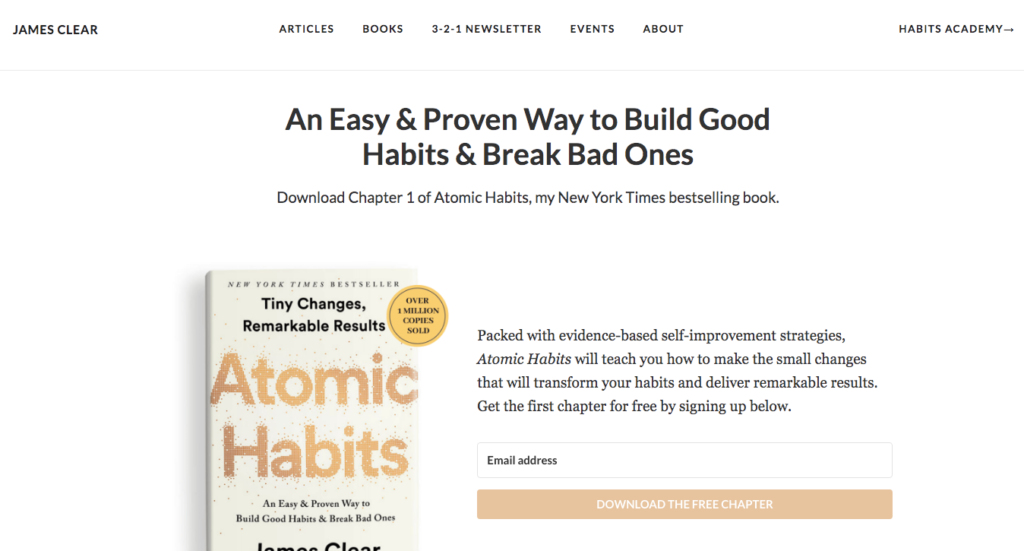
Any topic you would think on the subject of habits is covered by James. Whether that is habit formation, motivation, behavioral psychology, or procrastination, he took a deep dive into these content themes and explained them in a very relatable way to his readers.
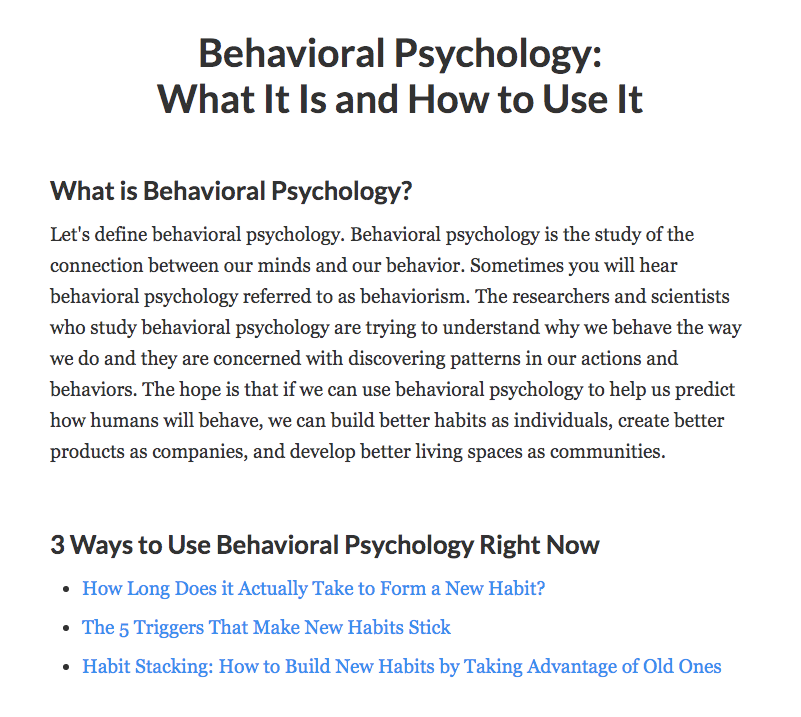
Here are some questions to help you discover your niche:
- What is one thing you enjoy doing? That speaks of your hobbies.
- What has been part of your career? That speaks of your professional experience.
- What is one thing you've been wanting to share with others? That speaks of your advocacy.
You may also use the "Hedgehog Concept" by Jim Collins to find your niche.

It is the intersection of three things:
- What are you deeply passionate about?
- What can be the best in the world?
- What drives your economic engine?
Take a moment to examine yourself. There you discover your preferred niche.
Know your voice and style
Your personal brand voice and style matter.
People will create an impression about you based on their first consumption of one of your content pieces. How you communicate through blogging helps them decide whether you are worth following through email subscription (a subscriber) or to your social media accounts.
Over time, your readers will find out what makes your content different from other niche bloggers.
Here are some tips to find your voice and style:
- What's your personality? Are you more outgoing or quiet?
- Who is your target audience? Your personal brand voice and style depending on how you want to serve your people.
- What is your unique angle on-topic discussion? How do you want to communicate your ideas?
Below are some resources on finding your voice and style as a blogger:
- Why A Writing Style Matters To Your Blog
- 7 Tips To Finding Your Writing Voice
- Problogger's Guide to Finding Your Blog's Unique Voice
Discover trending and in-demand topics
Identifying your niche, your personal brand voice, and style is planning how you can penetrate your niche market.
The way to move forward is to become a content creator through blogging.
Find topics that best resonate with your audience. I've covered content ideation in many of my comprehensive guides on this blog, check links below:
In addition, you can monitor trending topics using Exploding Topics. I highly recommend you subscribe to their newsletter to receive emails on the latest keywords that are gaining visibility.
Google Trends is another trend-finding tool that allows you to see some familiar trends from the past weeks.
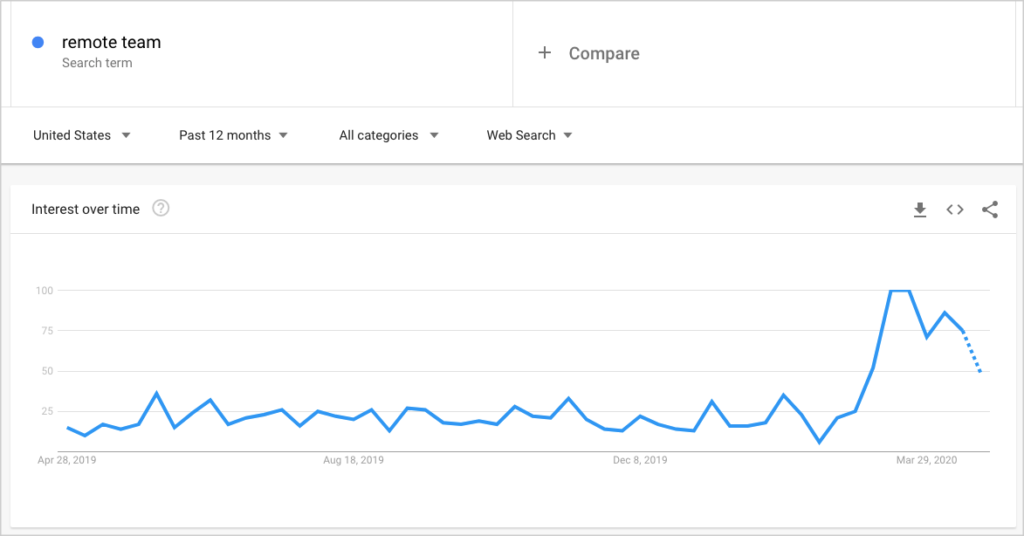
Dig deeper with Reddit by looking at what current conversations are taking place in your industry (see Reddit SEO Marketing guide). You choose subreddits to discover new topics or go straight to format-based subreddits (e.g. infographics, data, and cool guides).
Produce content consistently
Now, you transition yourself from a blogger who finds ideas to creating the blog content.
The ideal way for content production is to start an editorial calendar. This allows you to set aside time for writing blog articles.
By setting up a routine, you discipline yourself as a writer to put out articles on your blog. This avoids you procrastinating for days, weeks, and even months — wondering why you're not able to achieve the blog output you desire.
For further readings on consistent content production, here are useful guides you can consume today:
- The Ultimate Content Curation Guide For Marketers
- 10 Content Creators to Inspire Your Content Marketing
- 10X Content Ideation & Creation Process
Publish external content
When you are starting out as a blogger, there isn't a large network of readers following your blog.
The best way to improve your readership (increasing readers count) is by delivering external content to other relevant blogs (guest posts).
You increase readership by absorbing existing followers and content consumption of other blogs. Depending on the value you provide with your external content, you gain new visitors through blog links pointing to your linked content.
Here are some tips to get started with external content distribution:
- Start a blogger outreach campaign. Check these two useful guides on blogger outreach and guest blogging.
- Use Twitter effectively to let your social media followers subscribe to your latest content.
- Execute link building by discovering ways to market your blog content. Either reformat it into a video, audio, or slide presentation to get more eyeballs.
- Answer round-up questions and provide inputs to stories requested by journalists and other content creators. This is doable if you know how to use HARO.
Differentiate Yourself
Today, it's not just being better that is important. Being different gives you an edge in your industry. Discover your niche. Identify your personal brand voice and style. Create content that matters to your audience. Distribute it massively for effective delivery.
Comprehensive Guide to Bad Links
In this day and age where almost everyone is into link building, it's important to build the right types of links.
Knowing first if a link is good or bad can determine the course of your link building campaign.
If you aren't careful enough, you will be either missing opportunities associated with good links or be penalized (more on this later) with the bad backlink you've gotten.
The question therefore is, how can you know if a link is good or bad?
How to Determine If a Link is Good or Bad?
First off, the basis of whether a link is good or bad depends on who looks at it.
It may be good in the eyes of the person building the links, but it seems not right to the eyes of Google.
Google has specified what they consider as 'link schemes' in their Google Quality Guidelines:
Any links intended to manipulate PageRank or a site's ranking in Google search results may be considered part of a link scheme and a violation of Google’s Webmaster Guidelines, including paid links. This includes any behavior that manipulates links to your site or outgoing links from your site.
Therefore, any links that violate their guidelines may be considered bad by Google itself — but not primarily by the users.
Again, it depends on which point of view is considered: Google or the SEO guy who does link building.
There are a number of factors that we as a link building agency look at to determine if a link is good or bad.
Contextual Relevance
What this means is the page and the domain where the potential link can be acquired.
Besides the type of link (which we will be covering later on), the website where the link is placed is a critical success factor for link building.
We can look at relevance from three-level perspectives.
A. Page Relevance
It means getting a link from a page (linking from page) that is contextually (highly) relevant to your webpage (linking to page).
For example, if you publish a snoring guide for parents, you can get an editorial link from an article about sleeping tips for parents. The domain where that article is published can be on a domain about health and lifestyle.
You may not get a link from a snoring domain or website about sleeping, but you get a link from an article about sleeping.
B. Domain Relevance
This is when you get a link from a page of another that isn't directly about the topic of your page.
In our given example, your snoring guide for parents page can get a link from a page on another website about family behavior, but the domain where it is hosted is mainly about snoring.
C. Domain and Page Relevance
This is the combination of the two.
What this means is both the page and the domain where that page is published are relevant to your webpage.
Your snoring guide to parents gets a link from the 'sleeping tips for parents' article from a snoring website.
Why contextual relevance is important in auditing a website for link opportunities?
Google considers the relevance of pages through pages.
If you always get bad links from an industry that you are not part of (or you don't want your site to be included) (i.e. casino or adult), your site is likely to be associated with that niche.
Traffic
Nowadays, the most considerable factor in auditing a website for backlink opportunities is the traffic of the website.
Does your prospect site have a 1000 minimum organic traffic? Will it bring new visitors to your website, not only through referral (visitors from your target page to yours) but through an organic channel — given the site is ranking for industry keywords.

Traffic should be your key indicator of successful backlink prospecting. You can't just get a link from a random website or from a website that doesn't have any organic traffic.
Getting a link from a website that ranks has many benefits such as continuously bringing visitors to your page, especially if the linking-from page ranks for its target keywords
Traffic Location
It's important to identify if a website has a minimum viable organic traffic (~1000 minimum).
More importantly, you have to check if the traffic is coming from an audience you're also targeting.
There are many backlink analysis tools that can quickly give you this assessment.
One link building tool I'm always a fan of is Ahrefs.
Simply enter the domain URL of the website. Click on Organic Search. There you'll see the list of countries where the sum of traffic keywords is targeted to.
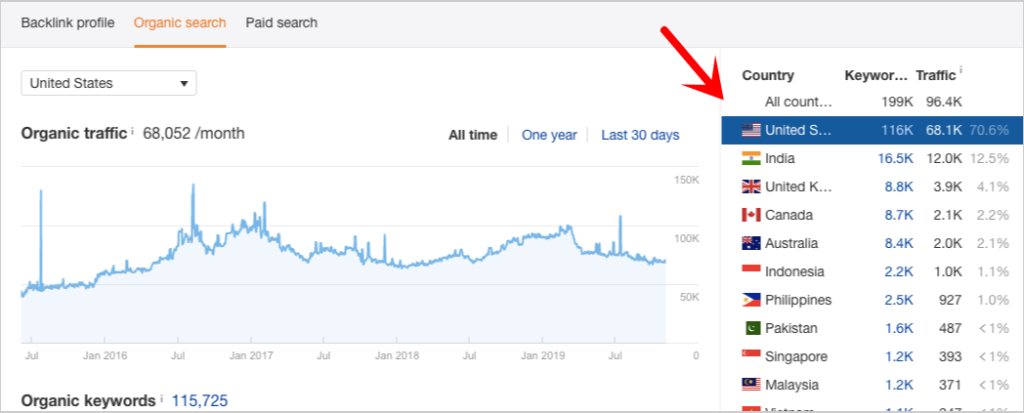
This metric estimates the total monthly search engine traffic to the target website, subsection, or URL from the top 100 organic search results. It is calculated as the sum of traffic from all organic keywords for which the target ranks.
If you are a website targeting foreign audiences, traffic location is a must to consider in every website you're trying to acquire inbound links from.
Speaking of traffic, you want to get referral traffic (and possible assisted conversions) from the right people — this means your target audience.
Link Placement
One of the overlooked components in a backlink audit for white hat link building is the idea of link placement.
Where the link is placed is significant on whether or not you'll get clicks from it.
In the past years, author boxes have been the most targeted section for links by many SEOs. The reason perhaps is that there's a luxury to match your target keywords with the links that you want.
You can easily make your target keywords your anchor texts.
Fundamentally, if you're looking for more value from your links, you want to ensure there is a high chance of clicks from your links.
Instead of aiming for links in author boxes, go for editorial links.
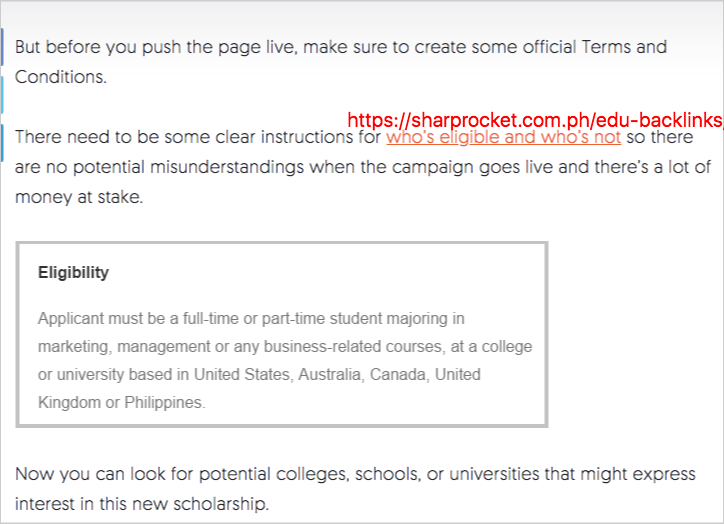
Editorial links are the most powerful type of links given that it signals Google that the brand being linked to is a trusted resource/reference (either it is targeting the homepage of the site or its inner pages/contents).
If a page from a website with good engagement and traffic references you with editorial links, it gives a signal of trust that your website is worth referencing. Of course, consider here the relevance and the surrounding text of the anchor text.
More and more, Google now understands the topic of a page based on entities — which will give you more emphasis on how they value your links from a relevance standpoint.
Anchor Text Distribution
It doesn't hurt to check the website's anchor text distribution.
You want to know if the site has a balance in its anchor texts for links.
Here is what the site's anchor text distribution should be composed of:
- Branded anchor texts (SharpRocket)
- Naked URL anchor texts (www.sharprocket.com.ph; https://sharprocket.com.ph/how-to-get-editorial-links-to-your-website/)
- Topical anchor texts (link building)
- Miscellaneous (click here; go here)
- Keyword-targeted anchor texts (editorial link building)
- Non-text links (image)
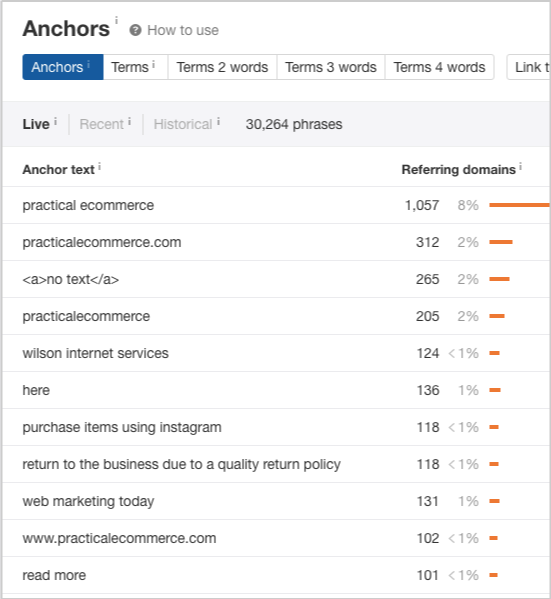
You only want to get a link from a website that isn't likely to get a penalty because of its improper balance in anchor text distribution.
Metrics
Another good determining factor if a link is good or bad is by checking third-party tools for metric calculation.
This means having a set of quantitative benchmarks to measure the authority of a prospect website.
Have a good grasp of viable benchmarks in your industry. The recommended number for Ahrefs DR is 20 and for Majestic TF/CF is greater than 0.75.
The website's contextual relevance, traffic, traffic location, link placement, anchor text distribution, and metric benchmarks (Ahrefs and Majestic) are good factors to consider when determining if a link is good or bad.
Google Link Penalties
It wouldn't hurt to know at least the basic overview or details about link penalties.
There are two Google link penalties: manual and algorithmic.
Basically, the difference between the two:
Manual link spam penalty happens when someone from Google's webspam team reviews your backlink profile, applies a google penalty, and sends you a notification in Google Search Console. The reasons behind this include a spam report from one of your competitors or there is something in your link profile that has triggered a manual review.
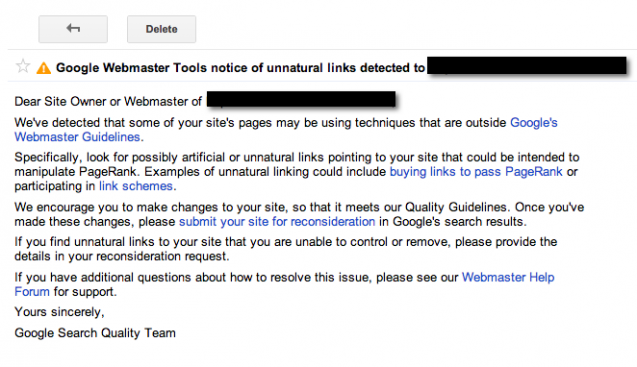
Meanwhile, algorithmic link spam penalty requires no human review but is automatically applied by Google to your site based on your site's backlink profile.
Both of these penalties can lead to a significant drop in organic traffic. So, it's a must to monitor your website on a daily basis.
Type 2: Algorithmic Link Spam Penalty (generally Penguin)
An algorithmic penalty is a penalty that is applied automatically by Google based on your link profile. No human review is required.
Less Effective Link Building Tactics
There are many link building tactics that you can use today. Some are white-hat, grey hat, or black-hat.
Whatever the color is, there is one thing you have to identify - the effectiveness of the inbound links to your site.
This is where the high-performing link building professionals differ from the average ones. They know what specific techniques can move the needle of results — organic traffic, additional authority to the page/site, so on and so forth.
The days are gone when you can shortcut your way to ranking success.
Here are some link building tactics that are totally obsolete, some of which are ineffective when not properly scaled.
Discussion Spamming
Community websites and other platforms where people would have a chance to discuss relevant topics and are allowed to input links to reference some points that have been spammed for many years.
Blogs that allow do-follow comments have been all-day submitted for comments with exact match anchor text links.
"This is a superb post", "Your article is good", or any fluffy, no-value blog comments won't make the cut.
Alternatives to discussion spamming
1. Target discussion pages with high traffic
Discover discussion pages with recurring traffic. These are Quora discussions and niche forum threads are continuously getting visitors because the topic is focused on audience needs.
Here is a good example in Quora for anyone tapping the giant sleeping industry.
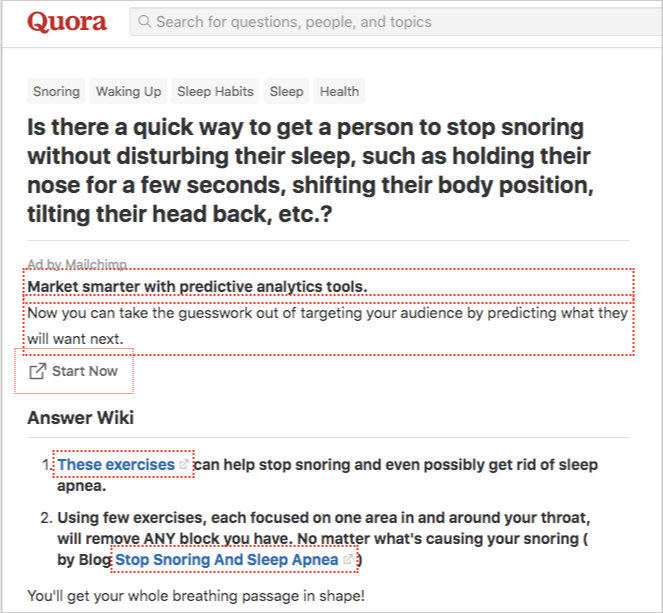
To discover these pages, you can use Ahrefs and enter the domain URL of Quora or other community discussion sites you'd like to reverse engineer with.

Go to Organic Keywords and search for topics in your industry.
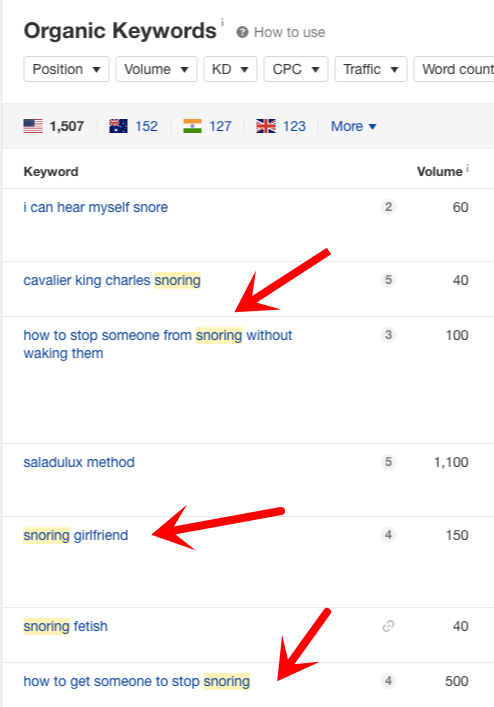
Go deeper with the results. Filter keywords based on position (0-10) to only get Quora pages that are ranking on the first page of search results and set search volume to greater than 100. This assures you that the Quora page gets a considerable amount of organic traffic.
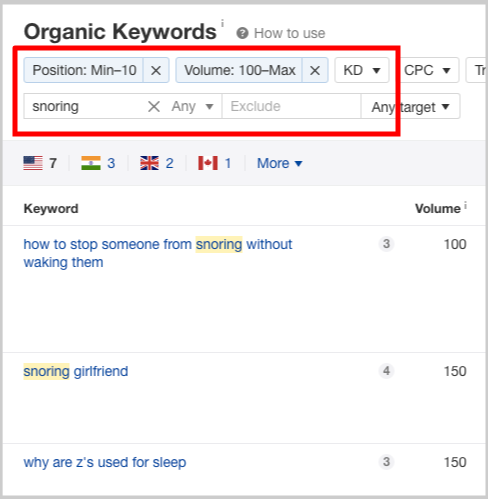
Go over to Quora pages that you found to be relevant to your site and where you can participate strategically based on your expertise. Don't just insert bad links if it's not relevant to the discussion.
2. Focus on 3 to 5 industry blogs to comment on.
The reason why marketers spam industry blogs are that they're too much focused on quantity over quality link. Inserting blog comment links to a hundred sites doesn't mean you're getting the results that you want.
To battle that, you can simply focus on 3 to 5 top-notch blogs in your industry.
Of course, you have to check if those blogs are accepting blog comments, regardless of whether they allow do-follow links (or by default no-follow).
Spend a good amount of time thinking of what would make the discussion better by scanning and reading the entire content. If it takes only a few minutes to read the whole article, do so, so you can craft a better quality site comment.
Submission Techniques
Getting links from websites that allow listings for business sites like directories can help diversify your backlink profile — making it as natural as possible.
However, doing so without carefully checking what makes the submission worthy of investment from a link perspective is a serious matter.
There are many low-quality directories, even generic submission sites that are already losing much traffic.
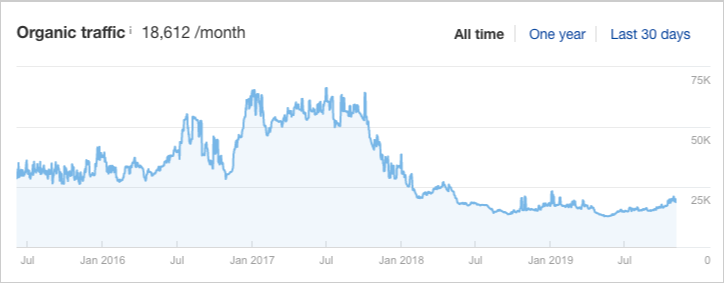
Of course, those sites are good to submit your website to, to acquire some links initially. However, putting much effort into this less effective link building technique should be thought of carefully.
Alternatives to generic submissions
- Find local citation directories in your city/state. If there are niche-specific, go over and prioritize submitting website details to them.
- Discover non-profit organizations where your business has been part of. Reach out to website managers and ask to be included in their profiles.
Improper Scaling Techniques
One consideration when scaling any link building technique is the person executing it maintains and improves the quality of activities.
In guest blogging, for example, link builders pitch the target guest publishers with the same generic pitch they've seen on SEO blogs.
This decreases the value of what they do as the campaign itself isn't focused on the unique proposition of the pitch.
Another example is when link roundups became popular from 2012 to 2015. A lot of marketers both in the internet marketing industry and other verticals started to pitch experts, practitioners, and top bloggers and publishers to get just "one tip" from each of them.
This was all for the purpose of compiling these tips in one roundup post and calling it "great content".
If you know how to use HARO and monitor HARO requests for your brand, you may have seen publishers looking for expert tips in HARO itself. They turn the platform into an ego bait ecosystem where they can easily request short-form content.
The problem with scaling link building techniques that sacrifice quality is that the value that should be given to its end-users diminishes as those exact techniques are aggressively used by anyone.
Alternatives to low-quality scalable link acquisition techniques
1. Use content gaps as topic ideas for guest blogging
Find content gaps in your target publisher's blogs. Look for keywords they haven't ranked yet but their competitors have.
You can use Ahrefs to find what they are currently lacking in content based on what keywords they are not ranking yet.
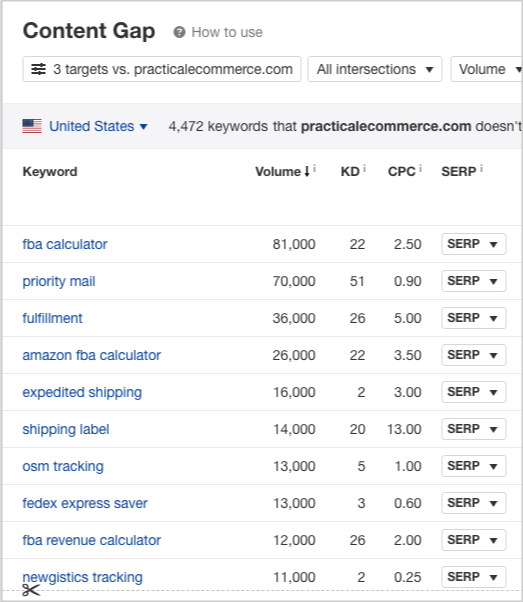
List those insights in your guest blogging spreadsheet.
When you start pitching publishers, you include in your email copy the list of suggested topic titles that correspond to potential keywords that they can target.
This simple tweak to the guest blogging process can make a great difference in how the response and conversion rate would turn out.
Emphasize the value of potential ranking opportunities from your enlisted topic ideas.
2. Use pre-link bait strategy to check topic's linkability
Producing long-form link bait content assets is risky particularly in today's time where you don't know whether your audience would share or even link to your content piece.
One way to check the linkability of your content is to actually start a preliminary outreach campaign.
The idea is to know whether your topic or a list of X websites content has chances of acquiring the links.
You send emails to publishers, influencers, and top-notch bloggers with the intent of asking them to be included in your linkbait content. Who would reject the idea and don't want to be featured?
Without them doing anything, you already give them enough value beforehand.
Once the content is published, you share it both with people who responded to your initial pitch and to people who might also be interested to share or even linking to your ego bait.
Seek For High-Quality Backlinks
Spammy links are everywhere. It's up to you and to me to analyze which opportunity from a page or site is worth asking for a link, and/or is worth trying to send an email pitch.
Seek editorial links from relevant websites that get monthly traffic from search (through ranking for its targeted keywords). Improve the same old link building strategies but with a new and improved version of unique propositions to ensure you're getting the most out of your link building efforts.
How to Use Relevant Content Marketing For Your Brand
What is relevant content?
Relevant content is your offer to your audience. Something of value must be brought to the table before they begin to take an interest in what you want and need. Reciprocation matters today more than ever in content marketing.
The basic question to ask yourself when making an offer is, "who is my target audience?"
Generally, if you don't know your audience, it wouldn't be possible to know and meet their needs with your content. It is as simple as that.
Relevant content marketing is meeting the minds of two parties. Tied that to link building, it is a meeting between your value proposition and the needs of your linkers.
Building high-quality links require that your content is relevant to your target audience. Your audience — linkers are looking for a piece (reference, citation, content type, etc..) they can link to.
Relevant content isn't only pertaining to your newly published 'definitive guide' or your latest round-up from top experts in your industry. It is more than a produced piece.
There are many factors to make this "meeting of the minds" successful. That includes a proper understanding of some methodologies.
Basic Methodologies in Relevant Content Marketing
Have some frameworks in mind when planning your content marketing campaign. Doing so gives you an advantage as to what kind of output you can expect from your campaign.
Audience Targeting
In targeting your audience, one activity you need to know is persona development.
In traditional marketing, a persona is described as a semi-fictional representation of an ideal customer based on market research and/or real data about your existing customers.
You develop a persona not only in preparing your outreach initiative but also in creating relevant content for linkers.
To have a basic understanding of how personal development works, you can check out these two useful guides:
I discussed linkable audiences in many of my blog posts before. On this broken link building guide for example, I always say that by targeting a specific linkable audience for resource guides, you are placing your content on a good spot for links.

With the above linkable audiences, you can start creating a persona. This persona helps you craft better quality in content and therefore, increases the likelihood of improving its linkability factor.
Linkable audiences are connected to the linkability of your content. Content's linkability depends on its utility to targeted content consumers. More so, with the type and size of the audience, the content caters to.
A more niche smaller fraction of audience directly being targeted by your content speaks of better quality in results than content focused on a large volume of scattered audience.
Developing a persona gives you an advantage in pursuing links. You know what to prospect, what metrics to use to qualify your link opportunities, and how to better craft your email copy.
Authority Building
Content helps build authority in your space. If you're starting out, the best way to gain momentum is to produce web assets that showcase your expertise through information and stories.
There are two key mindsets in building authority through content marketing: be the first or be the best.
Be the first
In an industry where there is high competition because of the mass production of content, you can't just publish one and hope that you build a huge following.
By being the first in content, you find untapped opportunities others don't seek. Either find a new angle on those topic opportunities or look for new keywords to create content around it.
You can use Ahrefs to discover emerging keywords and sort ones related to your niche.
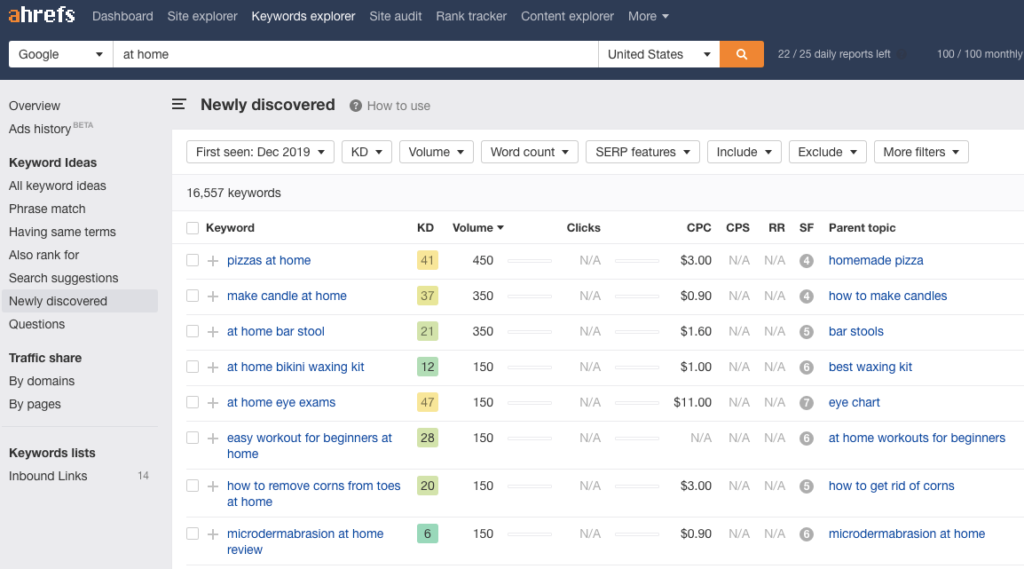
You may also look for frequently asked questions using the Question filter of Ahrefs' Keyword Explorer.
Be the best
Start producing a more comprehensive version than other similar content assets.
You can add other content formats to fulfill others' needs for learning. These formats might include, but not limited to video, audio, 3d versions, or images. The idea is to capture more audience by offering more ways and opportunities to consume your content.
Curate better by making insights from industry experts flow smoothly within the content. Put in first sections with information not expected by your readers ("unexpected hooks"). By adding this element to your content, you're likely to expect more engagement of your readers to your page.
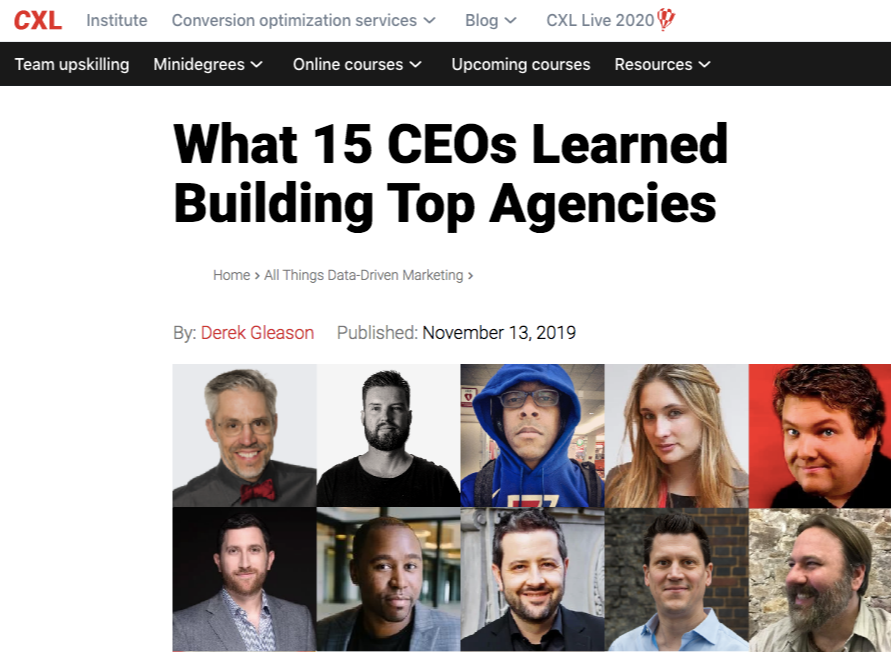
Aside from collation, make sure you have something important to say in your content. A data-driven piece, thoughts experts take on your topic, and new methodologies and principles can help increase the credibility of your content.
And lastly to be the best in relevant content marketing — be authentic. Your readers know if you're true to your words. Particularly in industries where practitioners are heavily perceived as true sources of content, it's important to have well-planned research on the subject.
What makes content marketing more relevant isn't only targeting the right audience and starting to build your authority through content production, but also have all these things properly distributed to good places.
Appropriation of Channels of Distribution
Content creation is just half of the battle. You need to distribute what you published.
There are many means to promote your content assets. But a great way to start is always anchored to what you are currently capable of.
You can use your social profiles lo build strong networks with your followers and like-minded people in your industry. For example, you can learn how to use Twitter effectively to create Tweetstorms that can attract an audience and clicks to links of your content pieces.
For Reddit, you may engage deeply in subreddits where your target audiences are in play. You don't just spam subreddits with your links. You first understand the rules and appropriately promote your content whenever it fits. Here is a good guide to help you with Reddit marketing.
Another content promotion channel is HARO. Answer queries and provides stories to journalists, publishers, and other content creators for topics you have expertise in. See if the platform fits your resources and discover how to use HARO on a regular basis.
Look for channels that are potential recurring sources for traffic. Start getting your articles published in major publications — best to pursue sites relevant to your industry.
Lastly, let's talk about outreach. Here are some outreach methods you can start using to promote your relevant content:
- Influencer outreach - create more brand awareness by collaborating with influencers for a piece of content or distribution of your web assets.
- Targeted outreach for tool reviews - if your web-based tool is niche-specific to a certain audience, start getting blog links from content sites.
- Manual outreach - initiate an outreach campaign to build the first set of authority links needed to rank your piece of content. Once links start to help improving content's rankability, your content can lead to some attraction marketing assets of your brand.
What Brings Them Value
Generally, relevance is subjective. And it is only your readers, your consumers or whatever type of audience you are looking to serve will determine how useful your content is to them.
Always bring value to relevant content marketing. Start with a value-driven mindset when planning, when creating, and when promoting your content assets.
